Unusual football stadiums
Featuring crocodiles, moving pitches and a man in a little boat
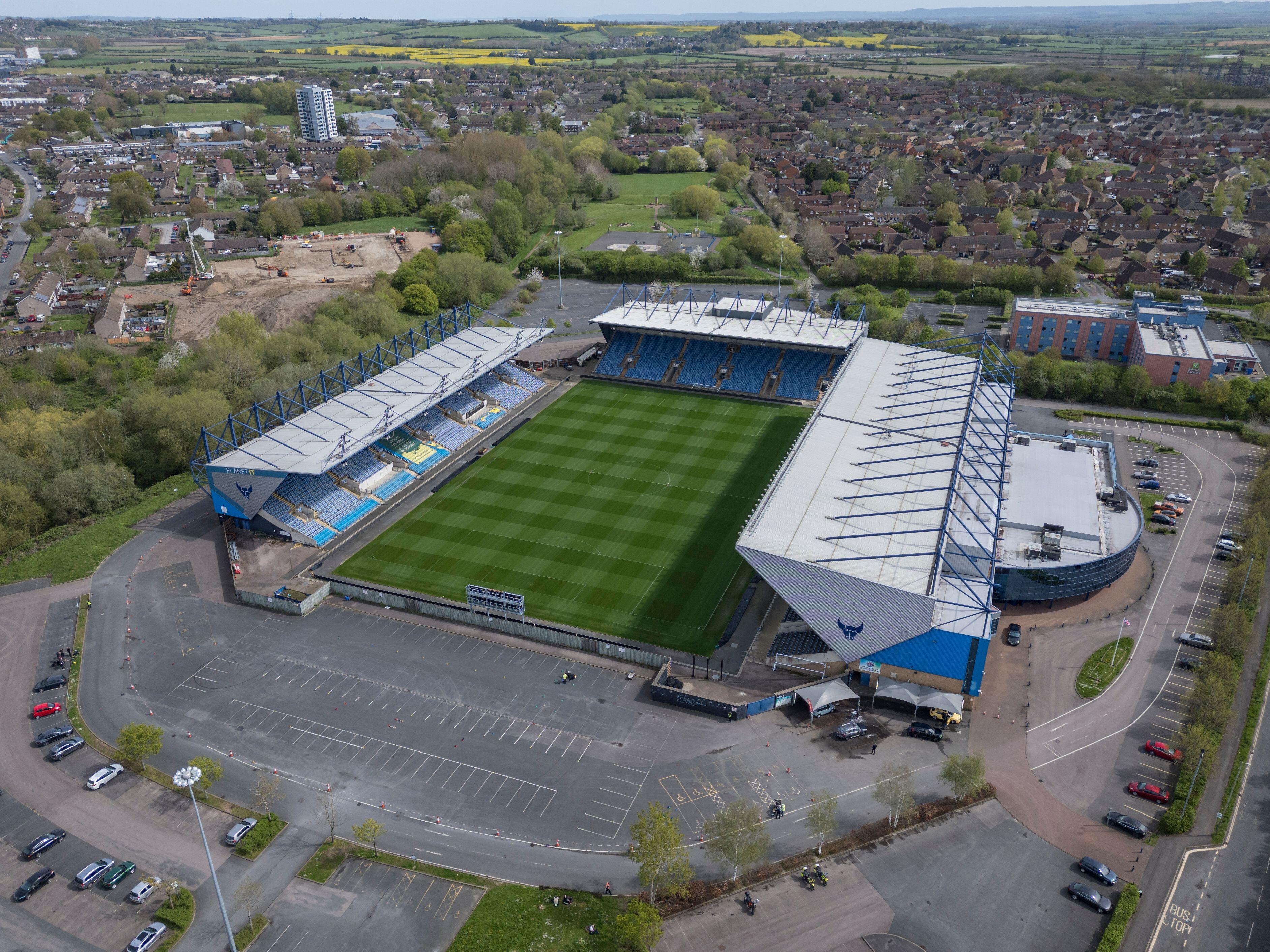
With football stadiums seemingly becoming more and more samey these days, it's reassuring to know that there are still plenty of quirky grounds around.
These are some of the most unusual of all (including a handful no longer with us which were just too weird to leave out).
To kick off the countdown, click any of those arrows on the right!
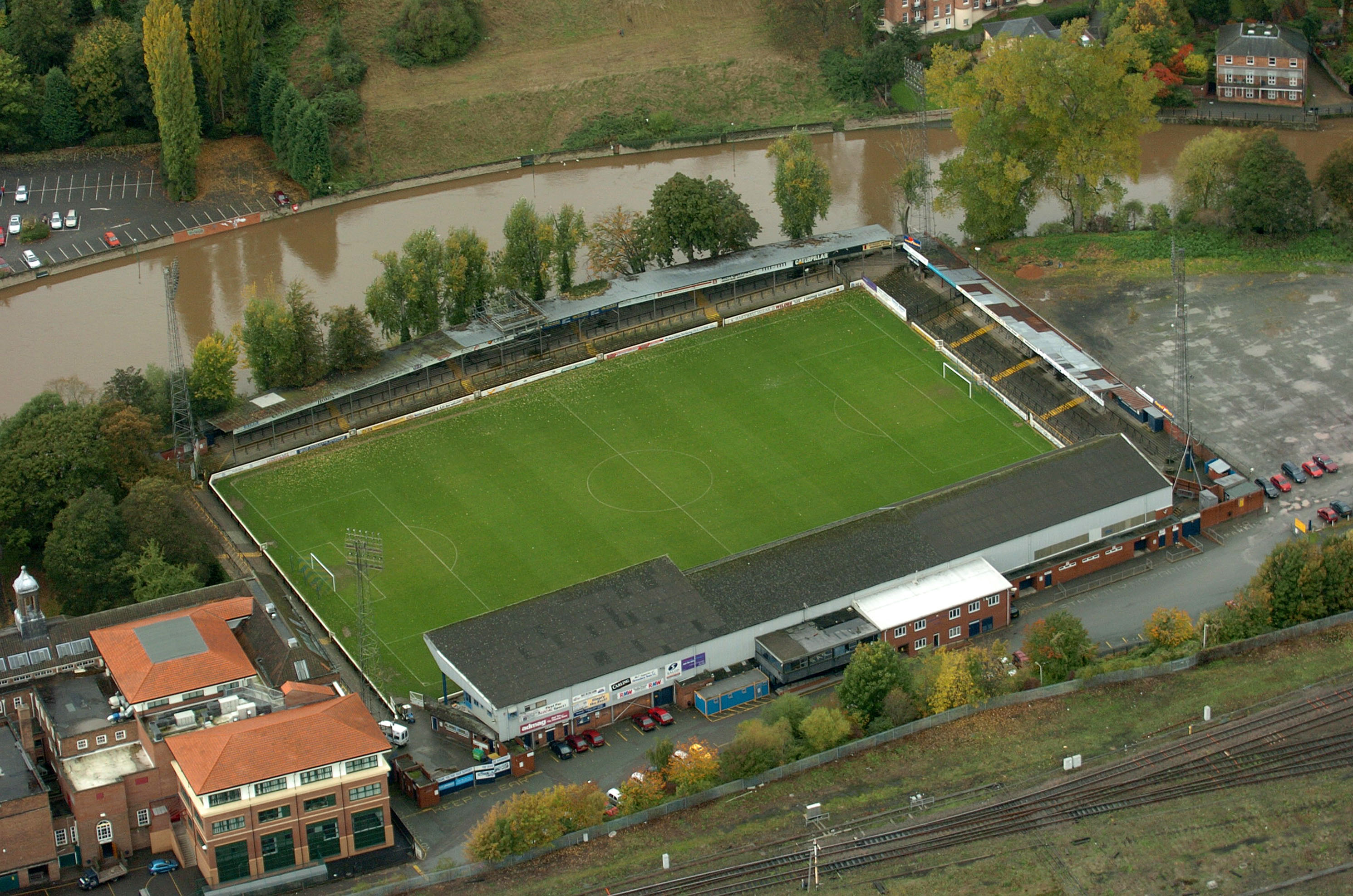
32. Gay Meadow (England)
Shrewsbury Town’s home from 1910 to 2007, Gay Meadow itself was your typical lower-league English ground – but it’s what went on behind it that made it unusual.
For many years, local coracle maker (a coracle is a small, lightweight boat traditional in nearby Wales – the more you know) Fred Davies would be stationed on the River Severn, which flowed right down the back of one stand, in order to retrieve any stray balls.
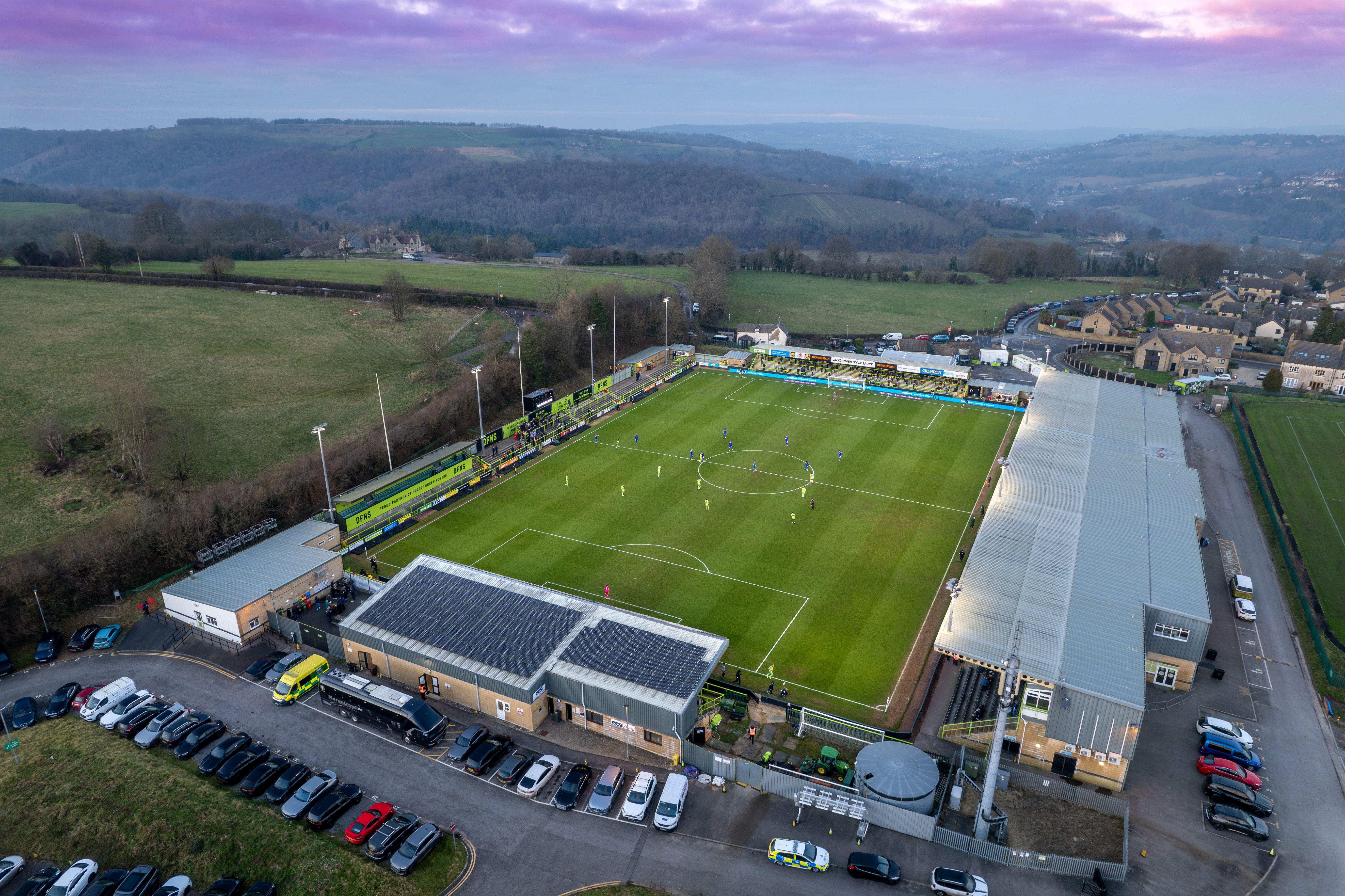
31. The New Lawn (England)
At first glance, Forest Green Rovers’ New Lawn doesn’t stand out as being noticeably different from most other grounds in the lower reaches of the English football pyramid – but delve a little deeper.
Forest Green are regularly cited as the world’s greenest football club, and the New Lawn is one of the most environmentally friendly stadiums around. Its eco-friendly features include the world’s first organic football pitch and solar panels on the roofs of the stands.
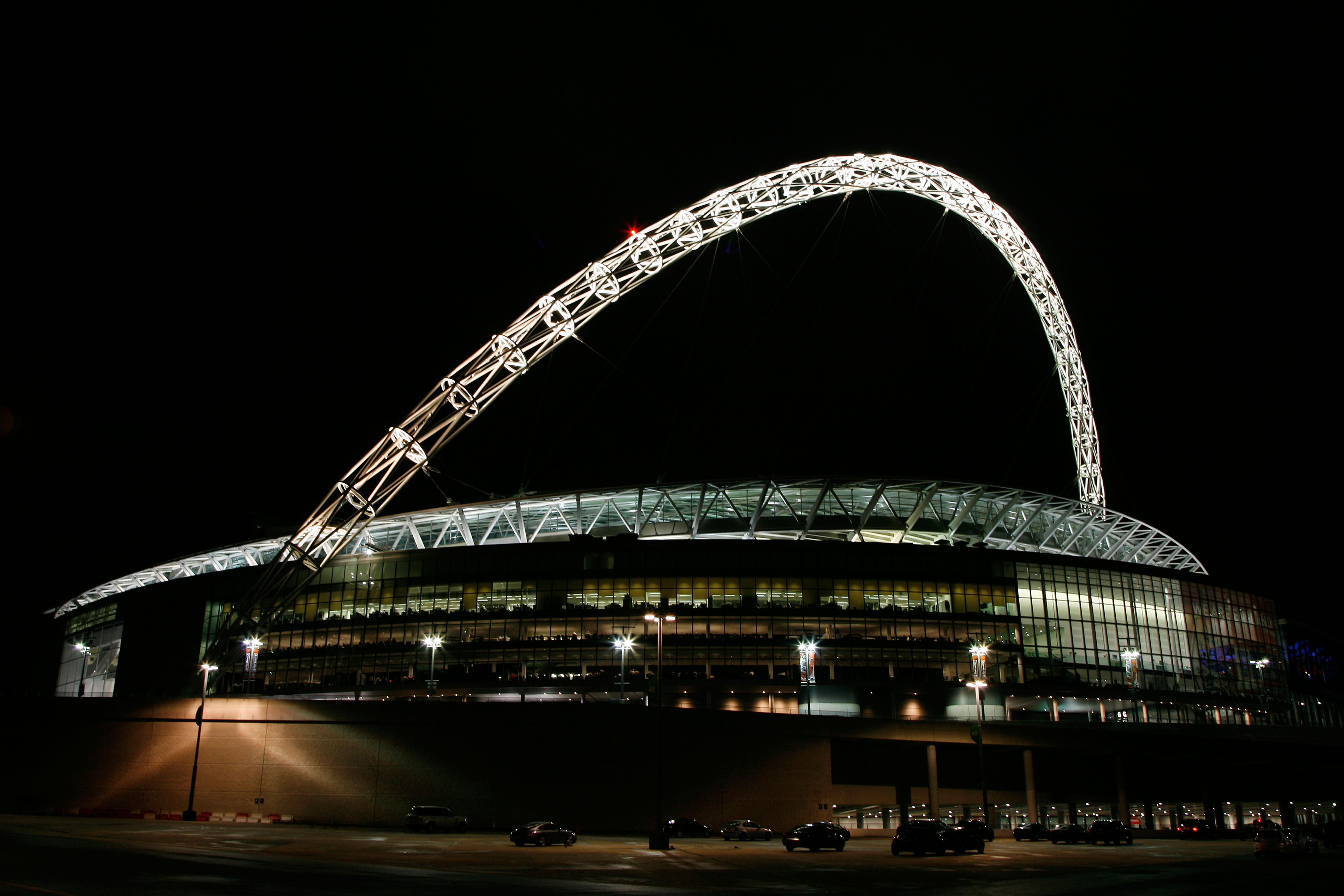
30. Wembley Stadium (England)
The old Wembley had two hugely distinctive architectural features: the iconic twin towers – which were demolished when rebuilding the home of football in the early 00s, and replaced with something equally unusual: a great big arch.
Visible for miles around, the arch sits 133 metres above the stadium at its highest point and spans 315 metres. We don’t envy the poor sod who has to climb the ladder inside to change the bulbs which illuminate the London landmark at night.
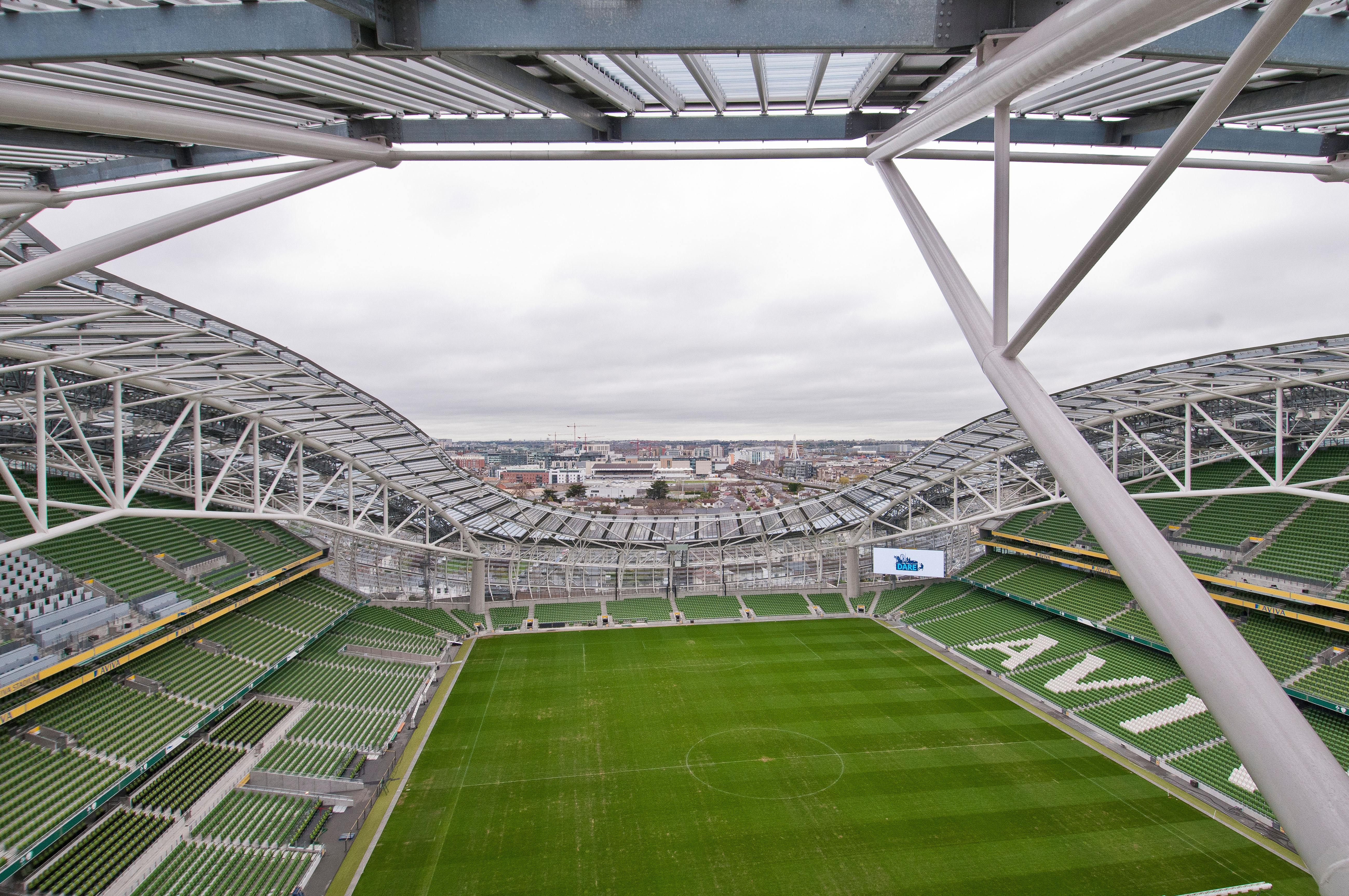
29. Aviva Stadium (Ireland)
Completed in 2010, Dublin’s Aviva Stadium replaced Lansdowne Road as Ireland’s national stadium – and it’s one of the most impressive ground in Europe.
It’s also one of the most unique, thanks to one end being significantly shorter than the other – a nod to its predecessor but also necessary to avoid blocking out the sun for people living in houses directly opposite.
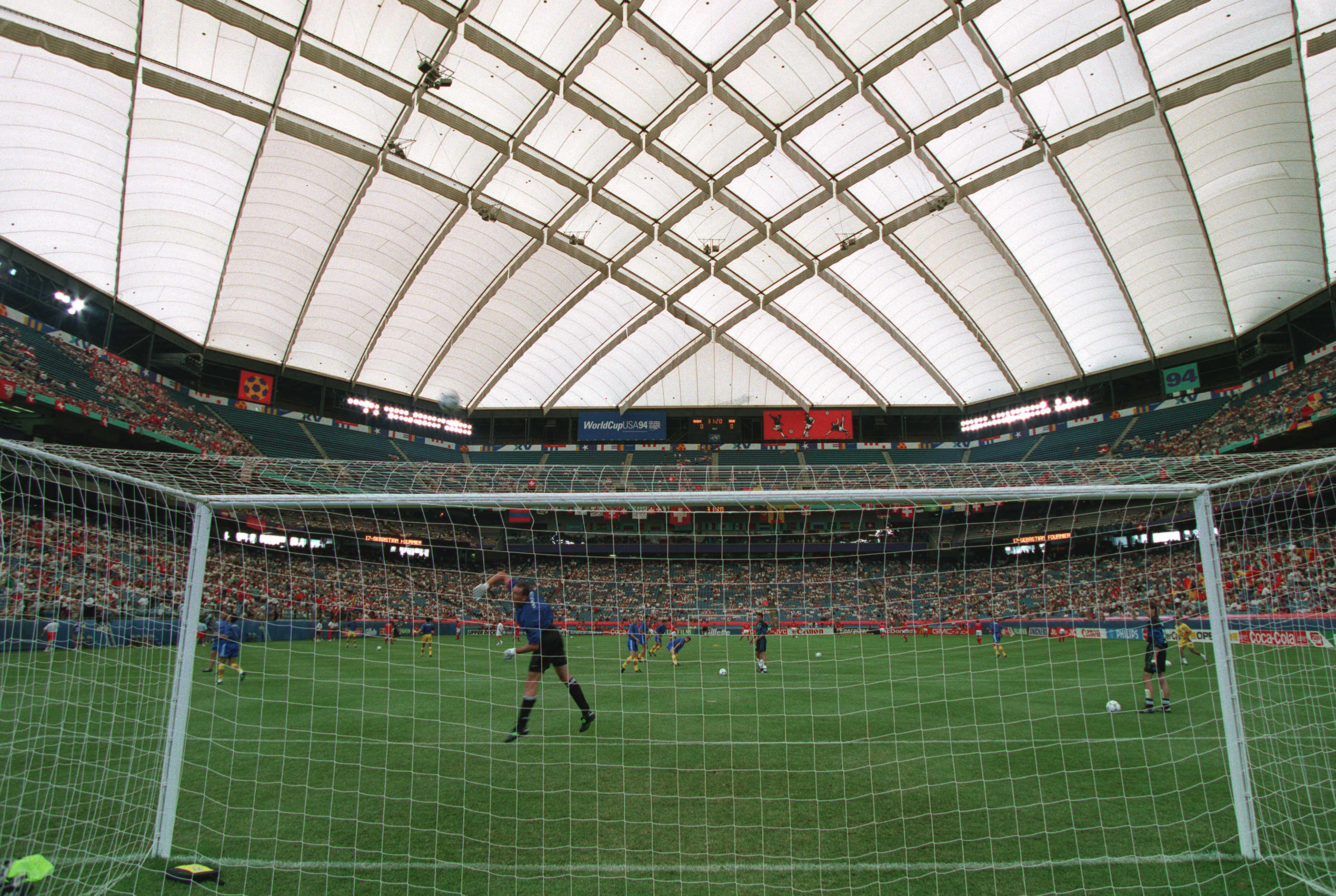
28. Pontiac Silverdome (USA)
With the USA hosting, the 1994 World Cup was always going to be a tournament with a difference – and that included the very first World Cup games played indoors.
Located in the northern state of Michigan, the Pontiac Silverdome held more than 90,000 supporters at its biggest and featured a fiberglass roof held up by air pressure (which ultimately didn’t prove especially weatherproof…).
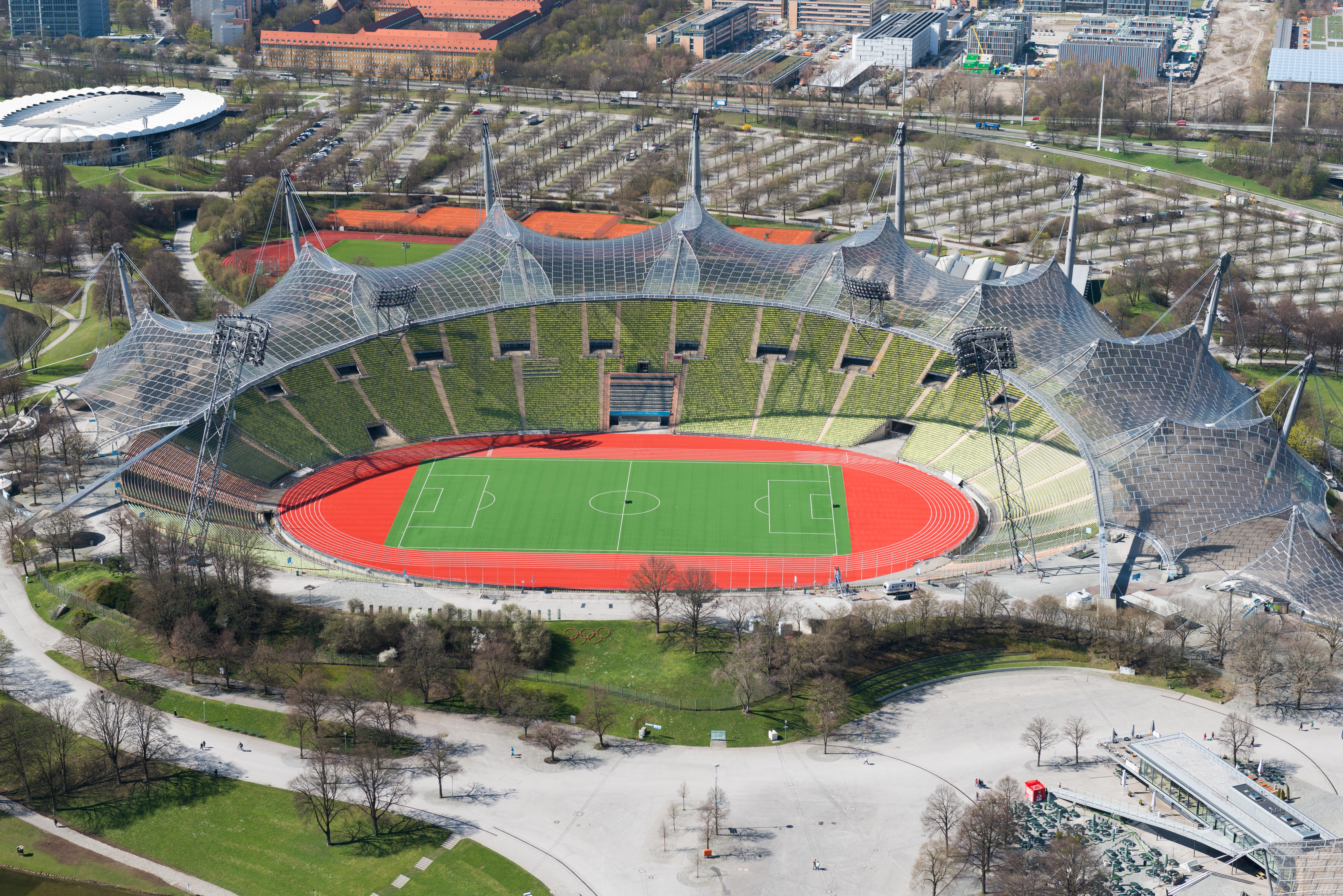
27. Olympiastadion, Munich (Germany)
Staying on the theme of roofs, the net-resembling canopy stretching across the bowl-like expanse of Munich’s Olympiastadium must be one of the most impressive anywhere in the world (although it does leave one side exposed to the elements).
We can’t think of another one like it, and it’s a shame this magnificent arena – the scene of England’s historic 5-1 thrashing of Germany in 2001 – is no longer used for top-level football.
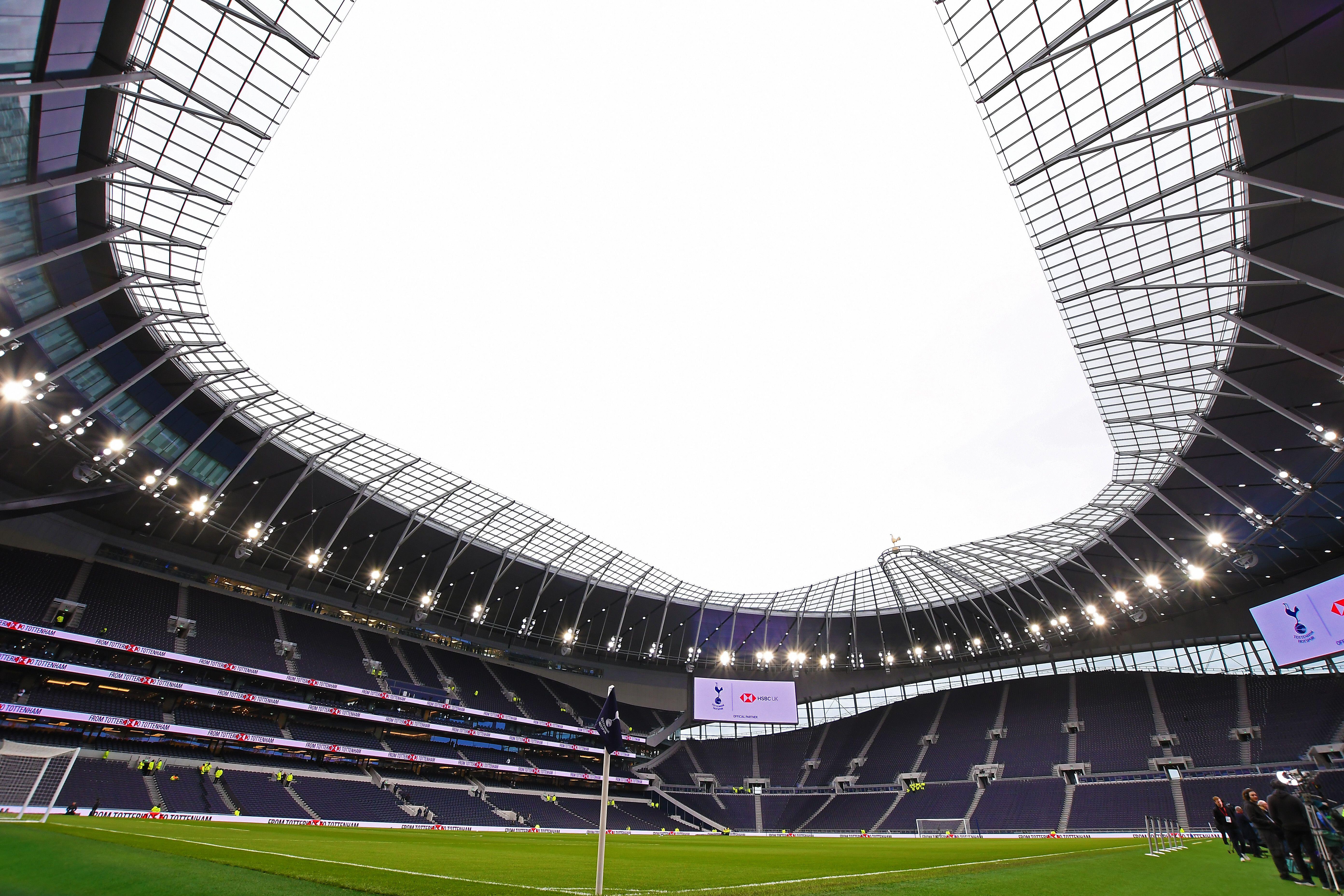
26. Tottenham Hotspur Stadium (England)
Spurs’ Tottenham Hotspur Stadium was due to have a cheese room – the height of corporate decadence – but, devastatingly, that plan crumbled like cheddar.
Nonetheless, the North London giants’ swanky home – built on the site of their former ground, White Hart Lane – has its quirks, most notably a pitch which divides into sections and can be retracted to reveal an artificial surface for NFL games.
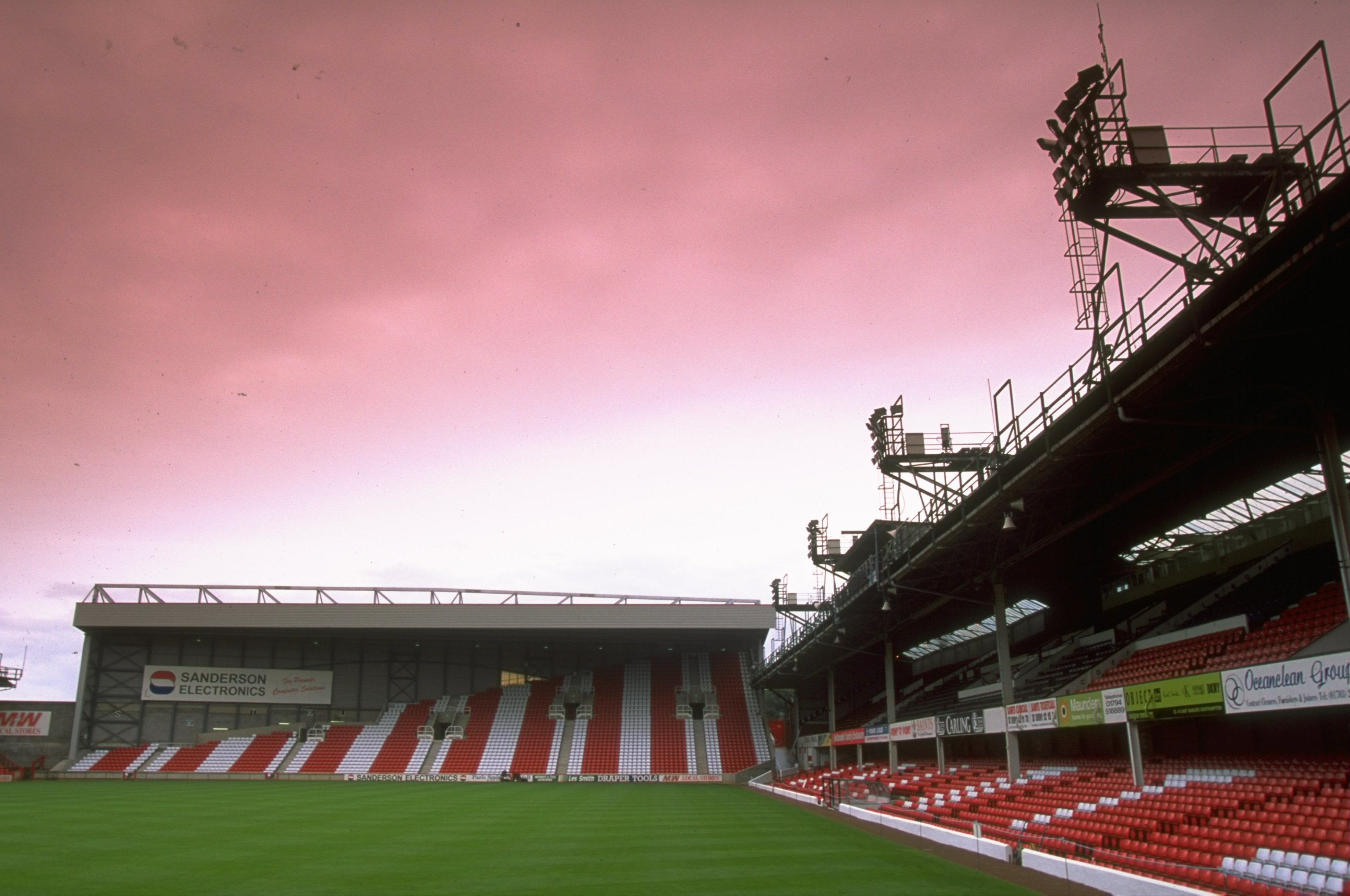
25. The Dell (England)
Southampton’s old home ground was considerably more charming than their current stadium, St Mary’s, thanks in no small part to the curiously shaped Milton Road Stand behind one goal.
With no more land to play with, the Saints ended up with this quirky triangular construction – which went from barely 10 rows of seats at one end to around five times that at the other.
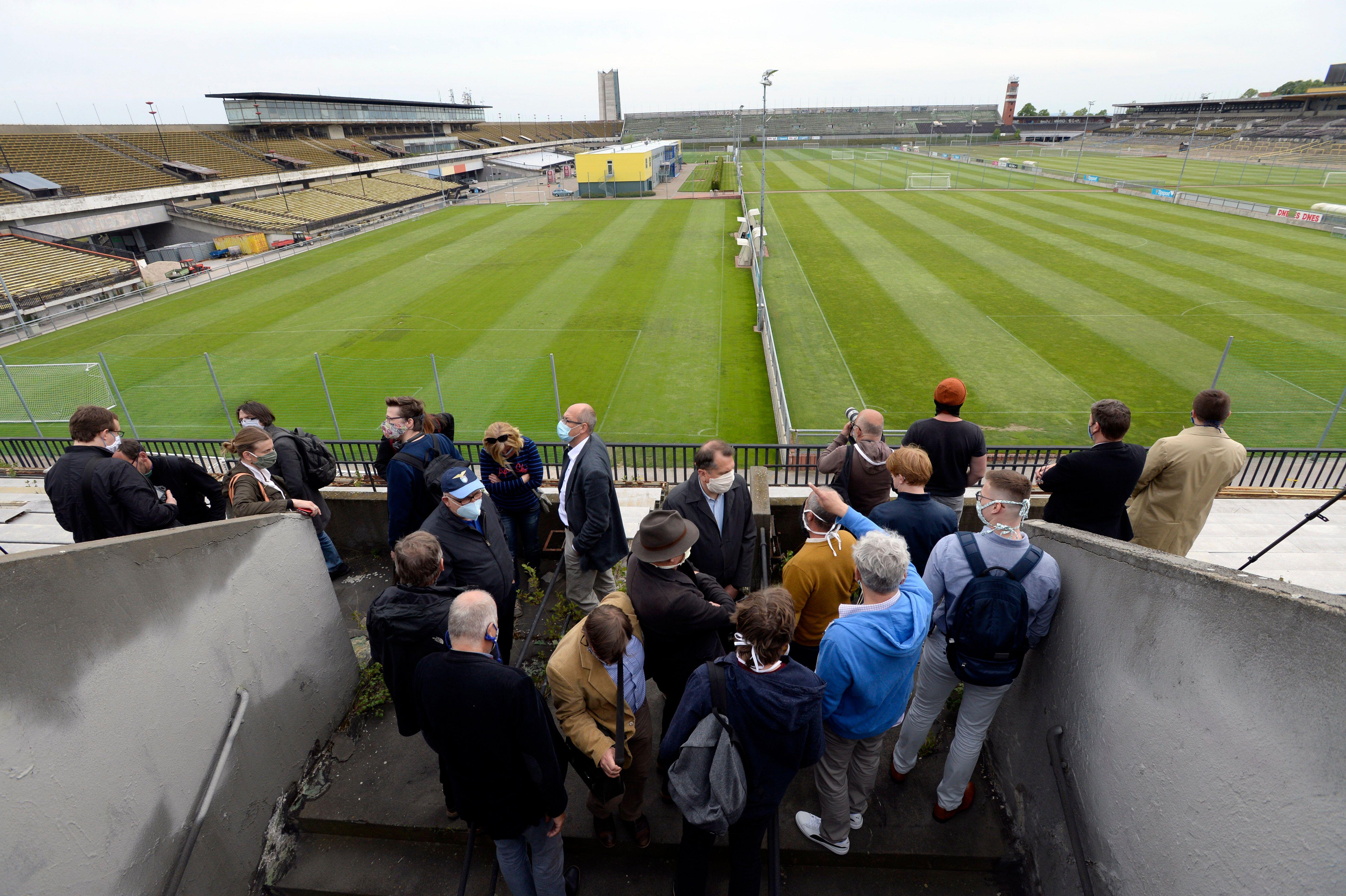
24. Great Strahov Stadium (Czech Republic)
Why have one pitch when you could have nine? That’s how many the veritably vast Great Strahov Stadium had room for – full-sized ones, too.
Boasting a capacity of 250,000 (enough to hold the population of Southampton, as it happens), the stadium later became a training ground for local club Sparta Prague.
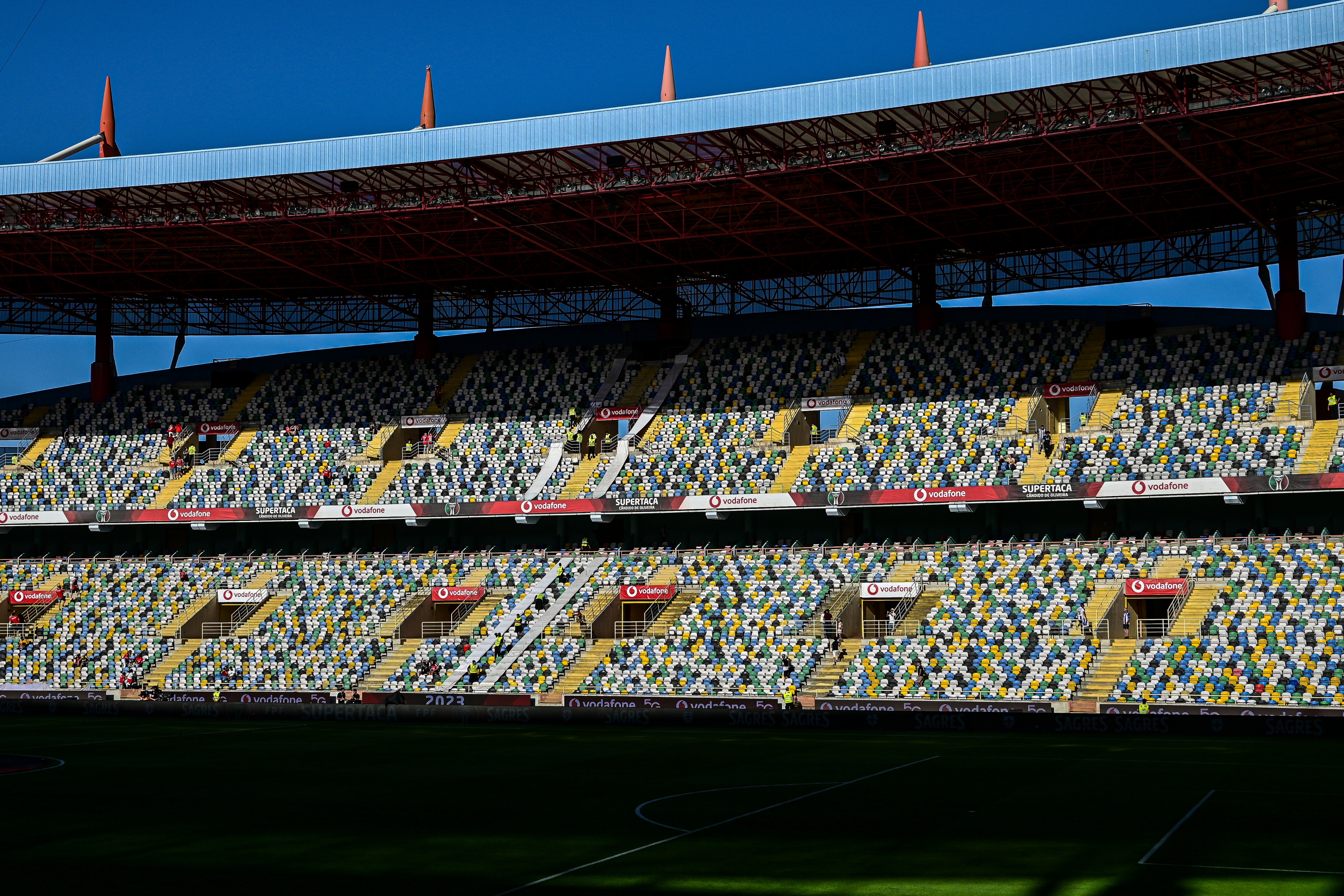
23. Estadio Municipal de Aveiro (Portugal)
No one wants to see their stadium on TV full of empty seats – and fortunately, the designers of the Estadio de Aveiro in Portugal had a solution.
One of the venues for Euro 2004, the stadium – home to lower-league club Beira-Mar – features multicoloured seats which give the impression that the stands are full whether they actually are or not.
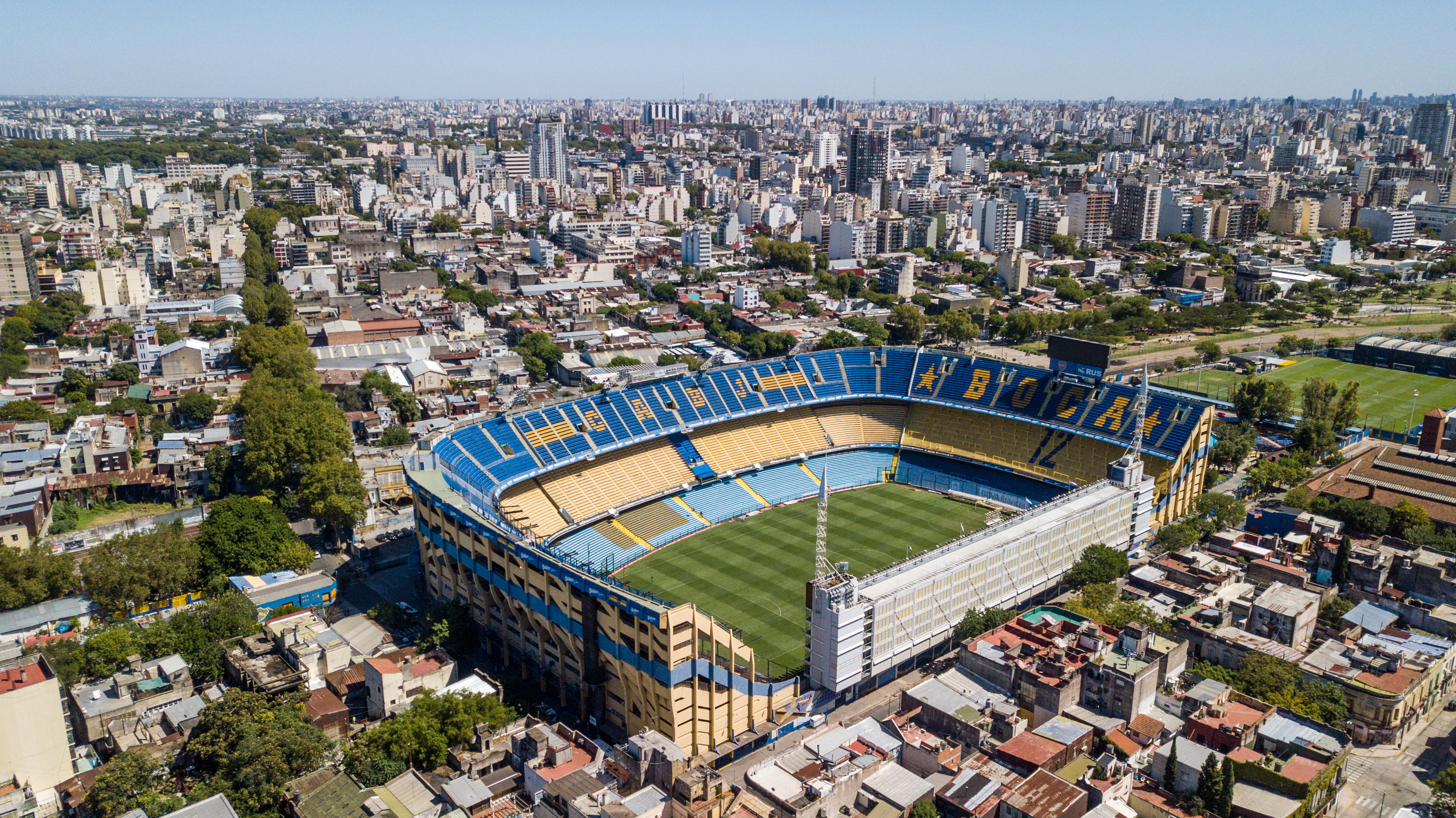
22. La Bombonera (Argentina)
The iconic home of Argentine giants Boca Juniors, La Bombonera translates from Spanish to English as the Chocolate Box – owing to its distinctive shape.
Featuring a ‘flat’ stand on one side and three seriously steep stands on the other three sides, the intimidating Bombonera has a capacity of almost 60,000.

21. Mmbatho Stadium (South Africa)
The 59,000-seater Mmbatho Stadium in Mafikeng, South Africa contains some of the most unique-looking stands anywhere in the world.
Built by an Israeli construction firm during the apartheid era, the triangular stands make it look like they never finished unfolding it. And get a load of those beastly floodlights – not that they’re needed much for football: the stadium is more accustomed to staging concerts and political rallies.

20. Loakes Park (England)
Perhaps the most notable game at Loakes Park came in 1975: the Chairboys, then of the Isthmian League, held Jack Charlton’s Middlesbrough – joint top of the First Division – to a 0-0 draw in the third round of the FA Cup.
Wycombe Wanderers played at Loakes Park for 95 years, and the ground in the centre of High Wycombe was famous for one unmissable feature: its pitch which sloped markedly from corner to corner.
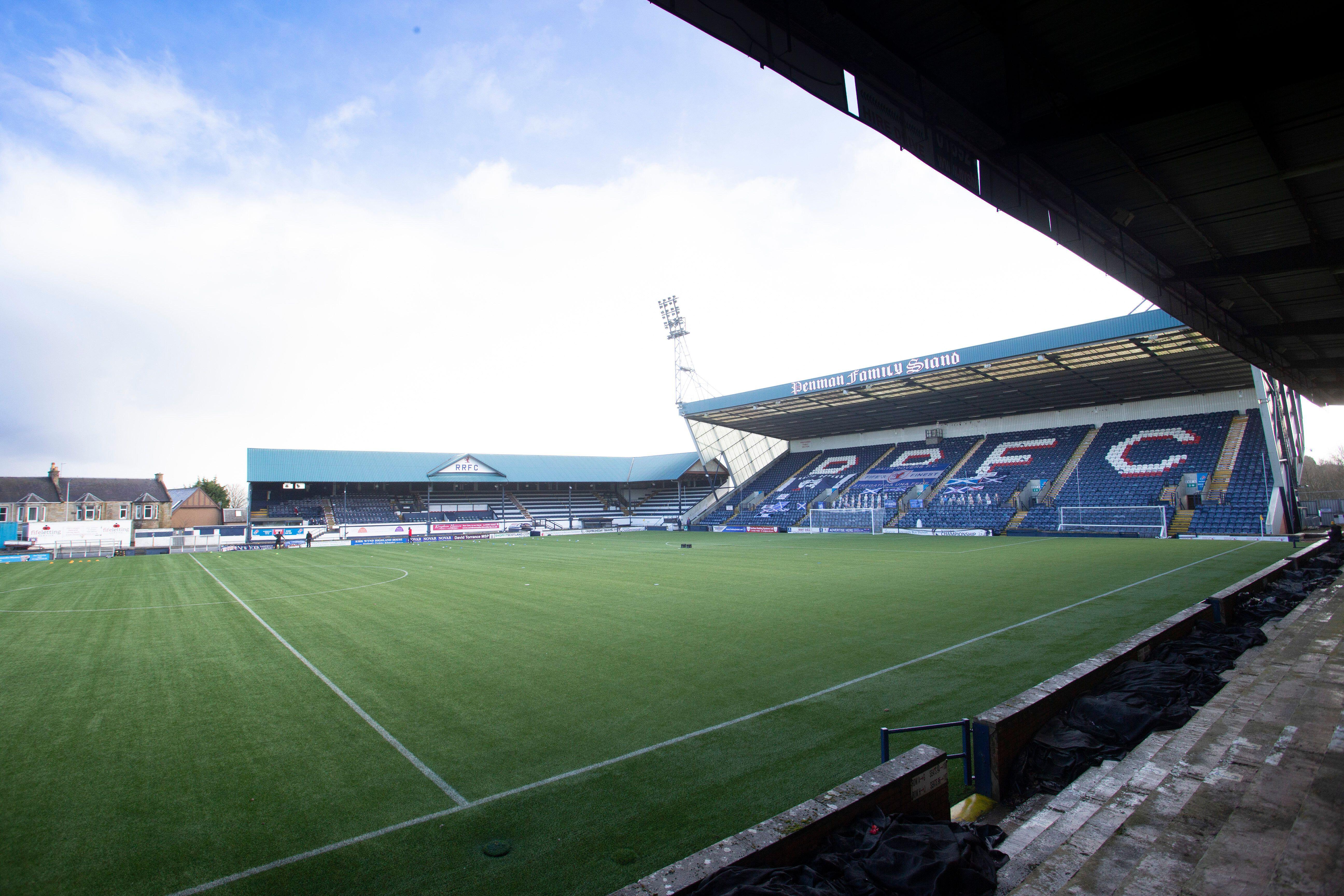
19. Stark's Park (Scotland)
Apart from its highly satisfying, almost rhyming name, Raith Rovers’ Stark’s Park stands out for having one of the few L-shaped stands in world football.
The stand in question was designed by legendary Scottish architect Archibald Leitch – whose portfolio includes iconic stadiums such as Goodison Park, Ibrox and Craven Cottage.
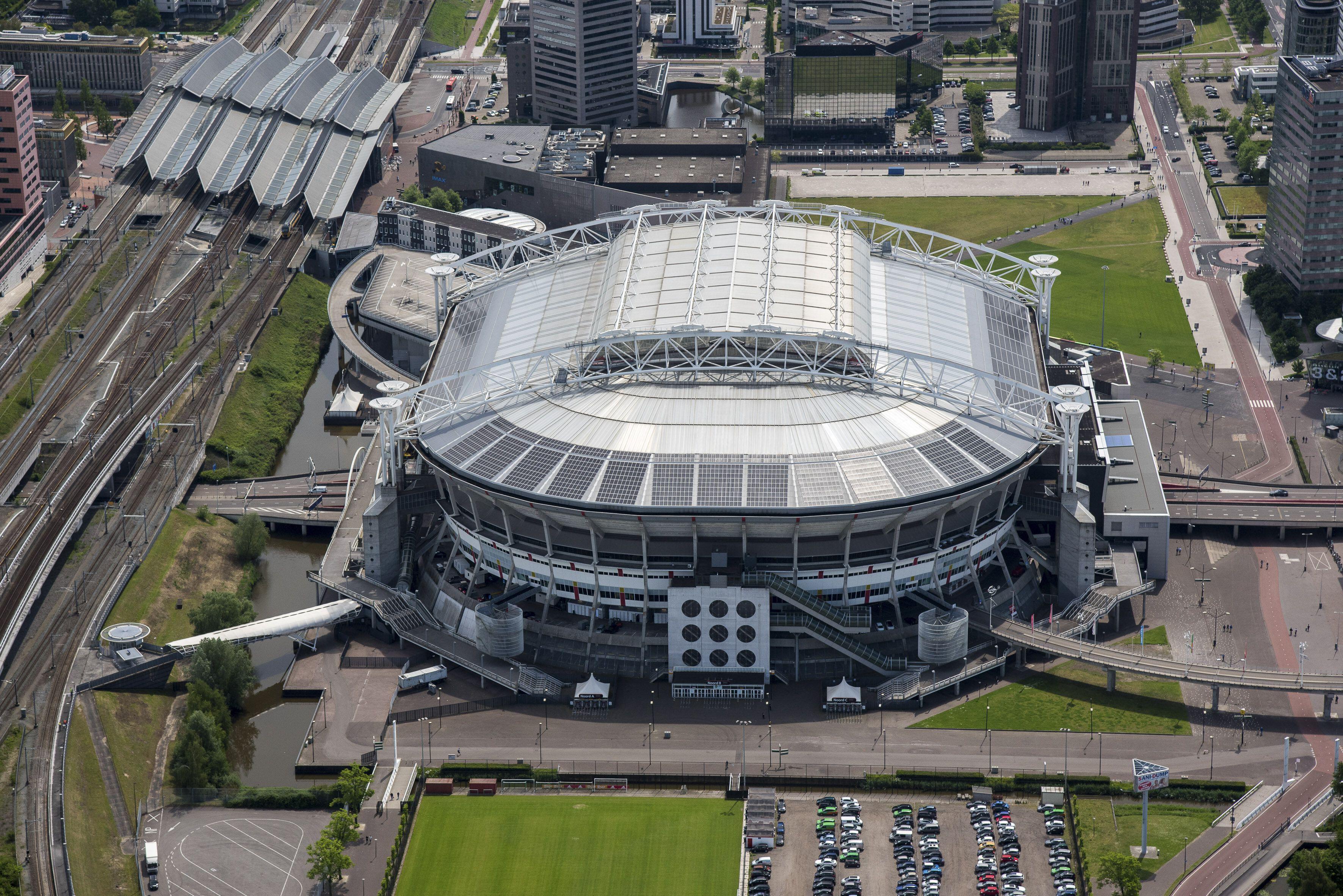
18. Johan Cruijff ArenA (Netherlands)
There’s something about a stadium with a road running underneath it – and Ajax’s Johan Cruijff ArenA is one of the most spectacular examples of such a feat of engineering.
Also boasting a retractable roof, the 55,865-seater arena opened with three concerts by the legendary Tina Turner – and later hosted matches at Euro 2000 and Euro 2020.
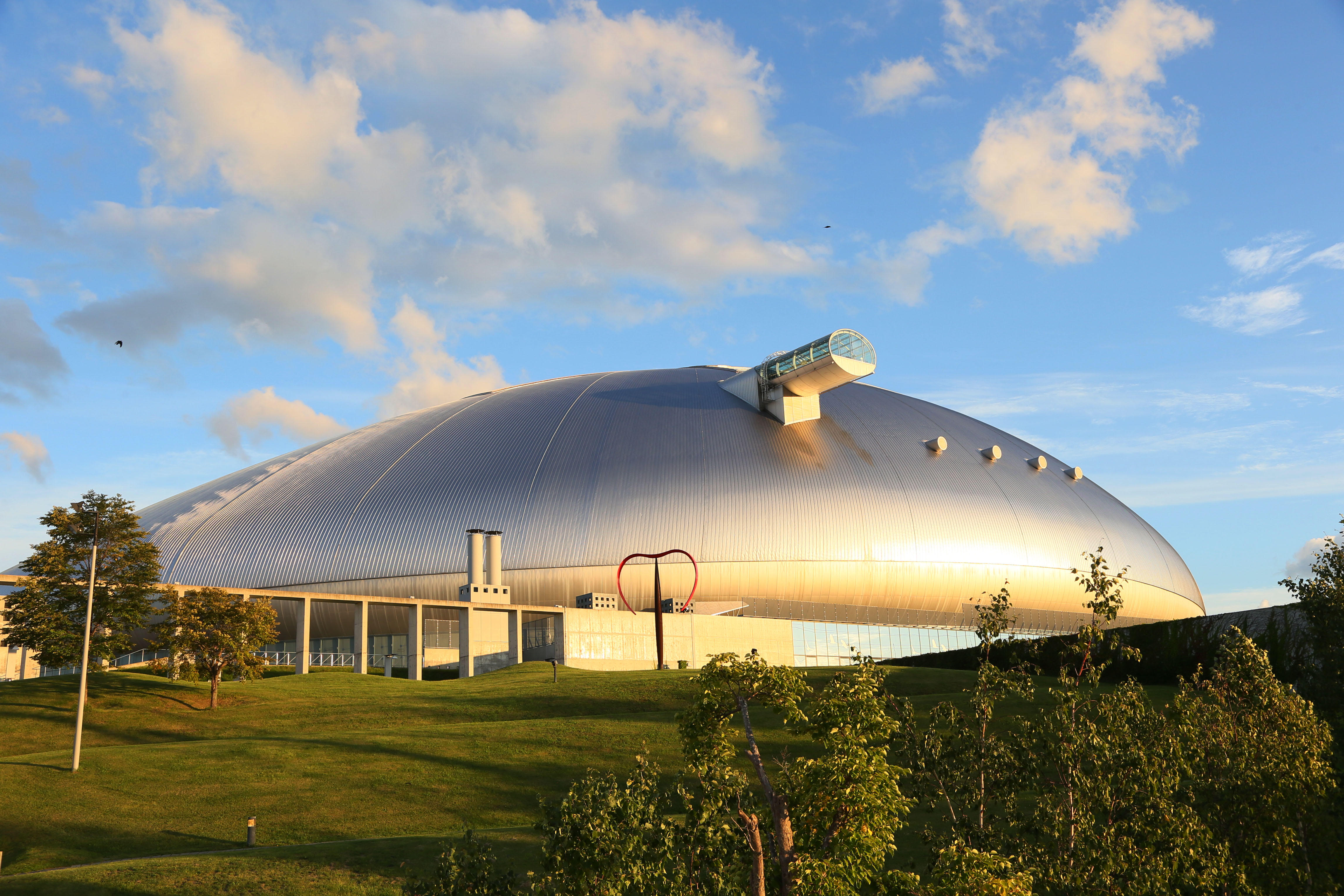
17. Sapporo Dome (Japan)
The scene of David Beckham’s redemption-gaining penalty to secure victory for England over Argentina at the 2002 World Cup, Japan’s Sapporo Dome is exactly the kind of engineering marvel you’d expect from the land of the bullet train and high-tech toilets.
Built for baseball and football (the brilliantly named Hokkaido Nippon-Ham Fighters baseball team left in 2022), the spacey-looking silver arena used to simply slide in a real grass pitch when switching between the two sports.
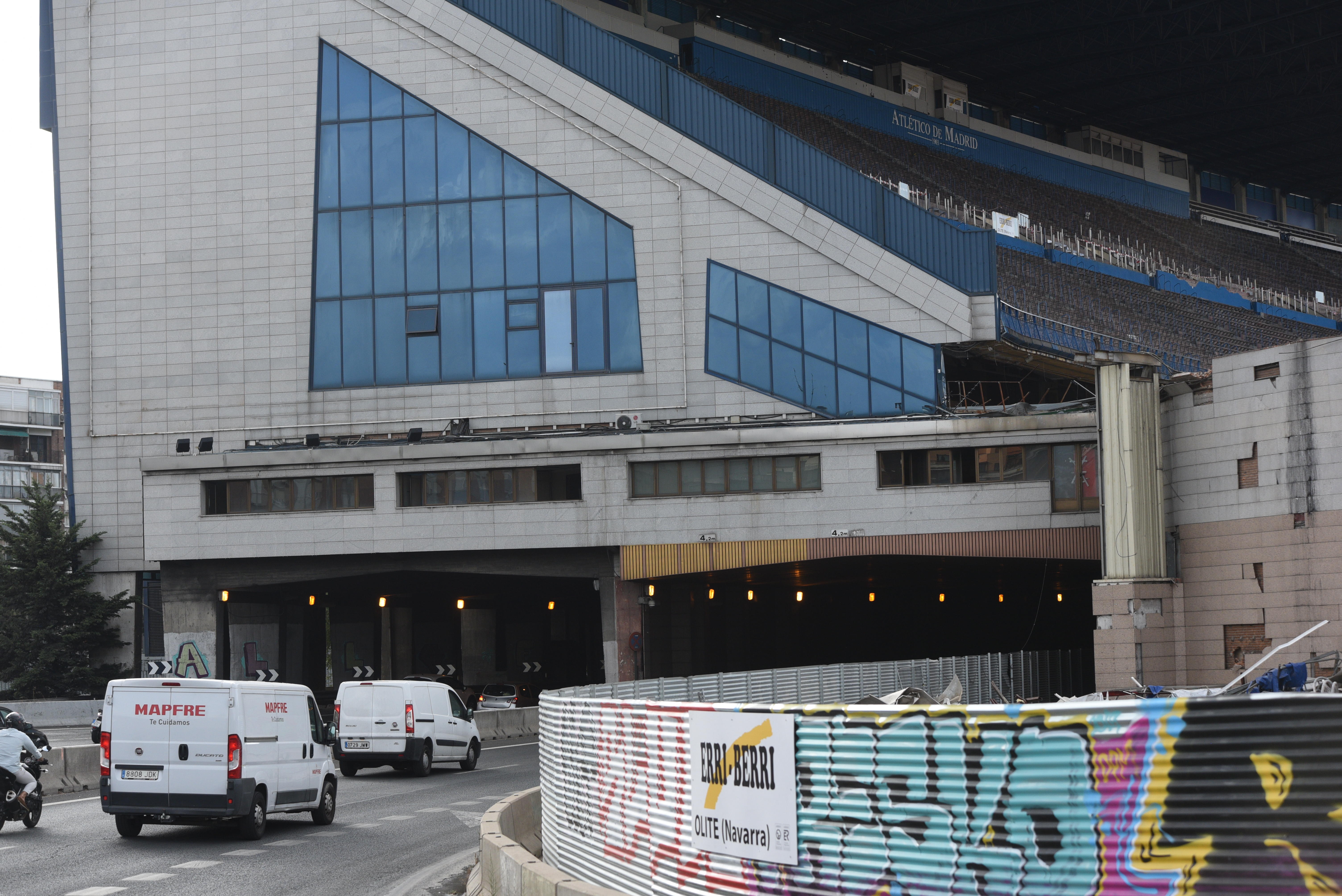
16. Vicente Calderon (Spain)
Atletico Madrid’s current stadium, the Metropolitano, has nothing on their old home, the splendid Vicente Calderon.
Built on the banks of the Manzaneres river, the Calderon later ended up with a dual carriageway passing all the way under the main stand. As we’ve already said, stadiums with roads underneath >.
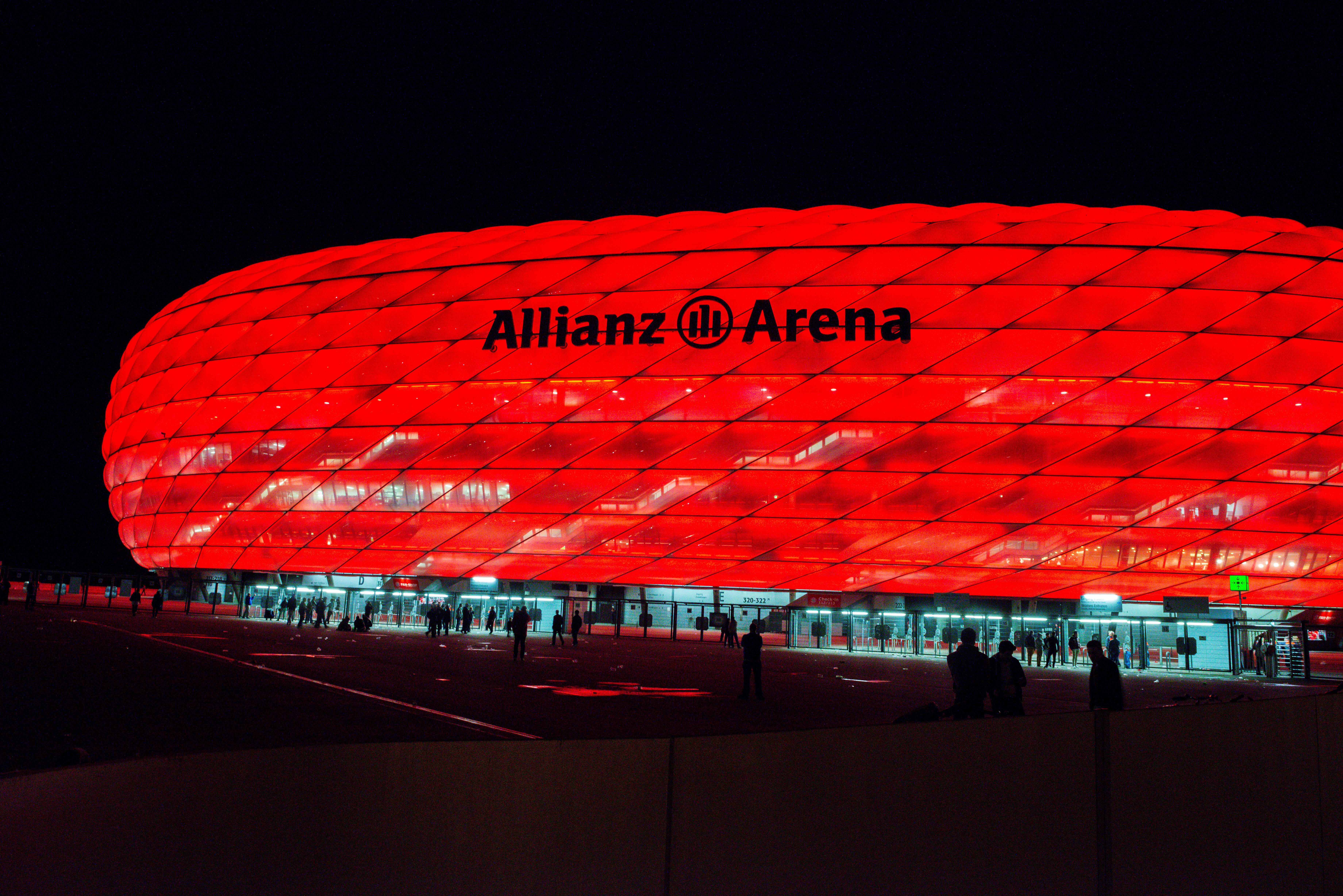
15. Allianz Arena (Germany)
Bayern Munich clearly love a ground with a flashy exterior. In 2006, Germany’s most successful club moved from the Olympiastadion to the Allianz Arena, swapping a remarkable roof for a whole snazzy light-up stadium.
If Bayern are at home, the panels on the outside are illuminated red; if the German national team are in town, they go white.
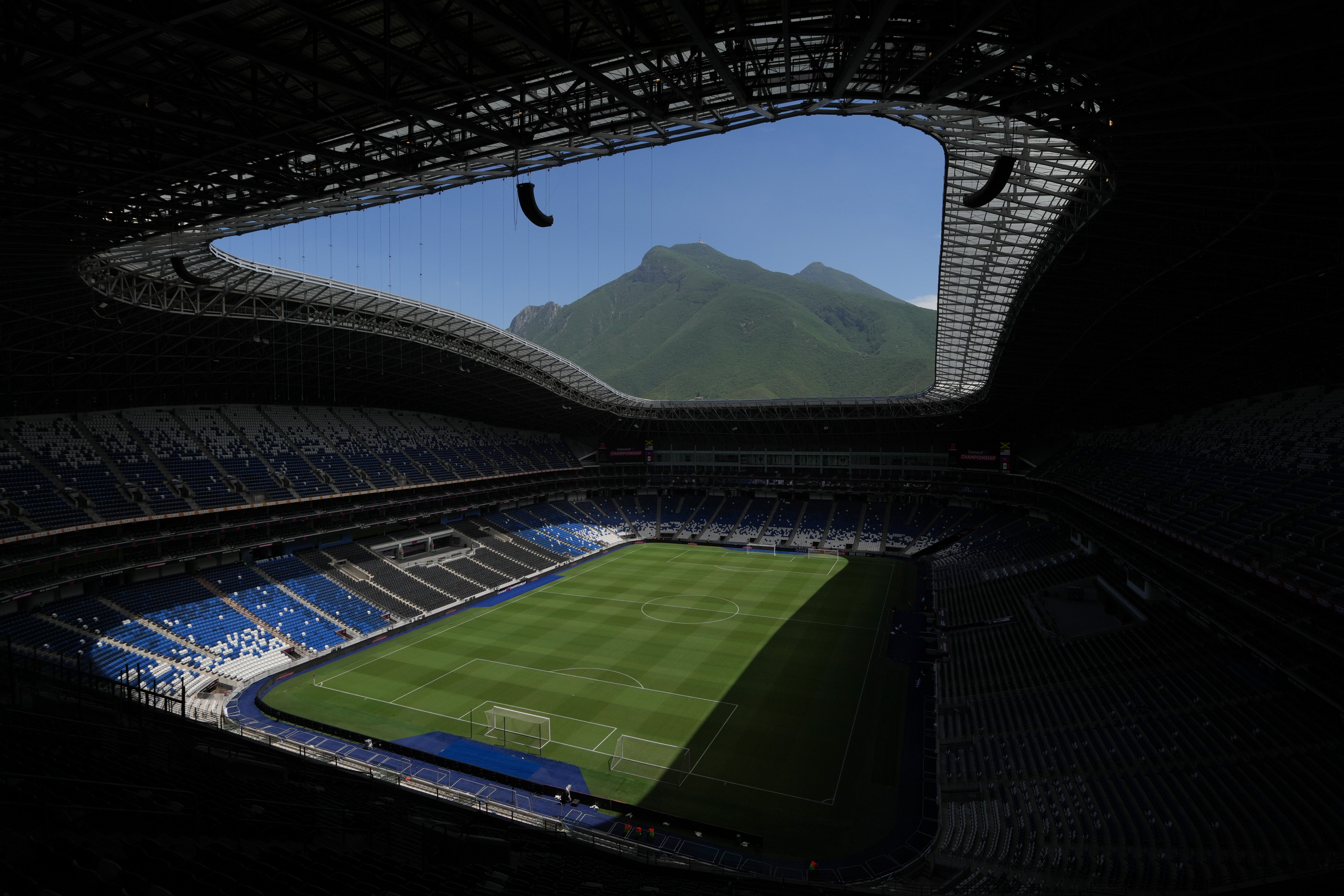
14. Estadio BBVA (Mexico)
At most modern, identikit bowls, you can’t see anything outside the stadium but sky. That’s not the case at the Estadio BBVA in Mexico.
Home to Monterrey, the impressive arena affords spectators a clear view of the Cerro de la Silla mountain which towers over the city (well, apart from the unfortunate souls sat at the end where the roof dips to reveal that very sight in all its splendour).
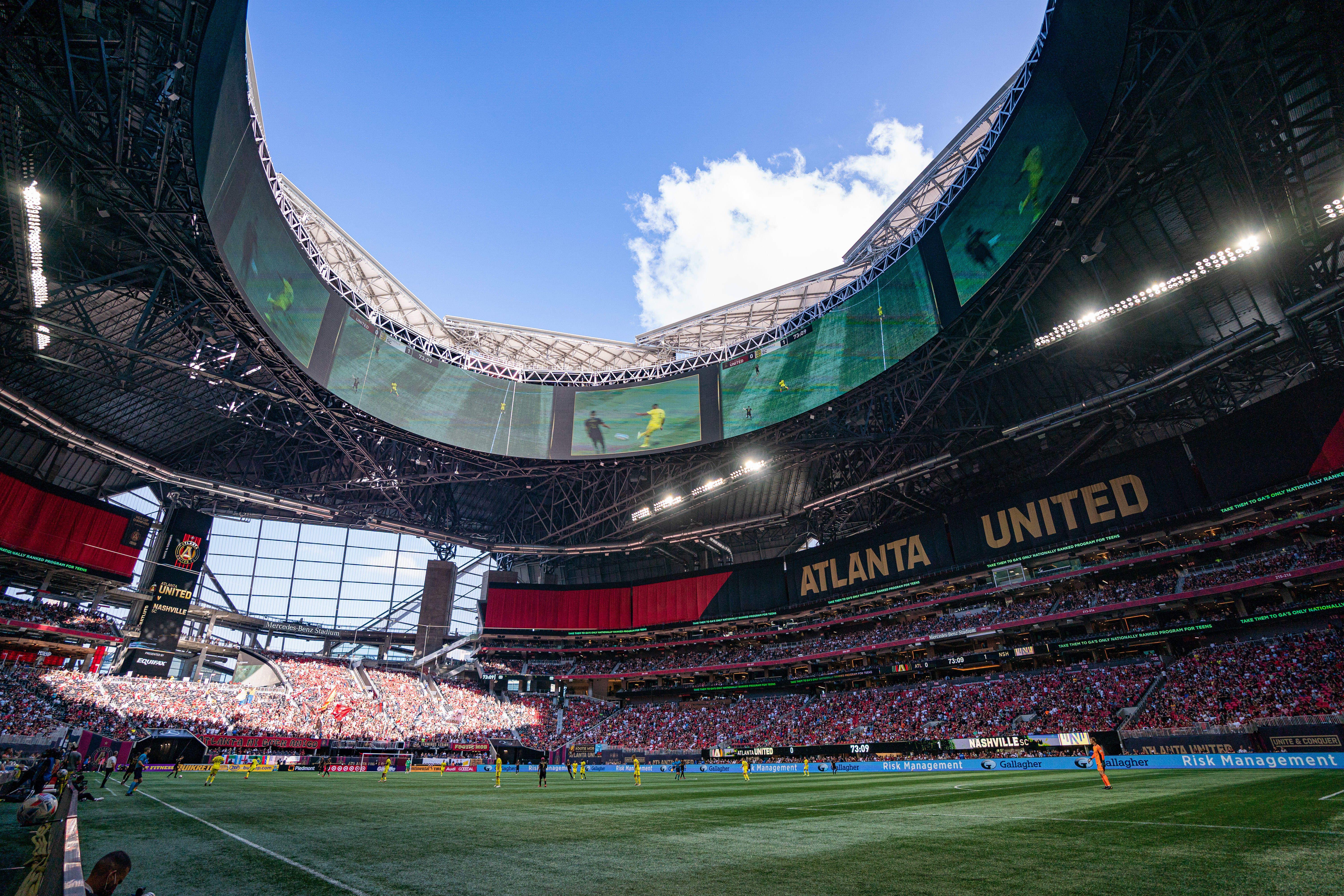
13. Mercedez-Benz Stadium (USA)
An absolutely stunning venue, the state-of-the-art Mercedez-Bens Stadium is home to MLS outfit Atlanta United – who share their home with the local NFL team, the Atlanta Falcons.
The most striking feature? A 360-degree big screen (‘big’ may be an understatement) below a retractable roof which, when opened, fans out like giant flower petals.
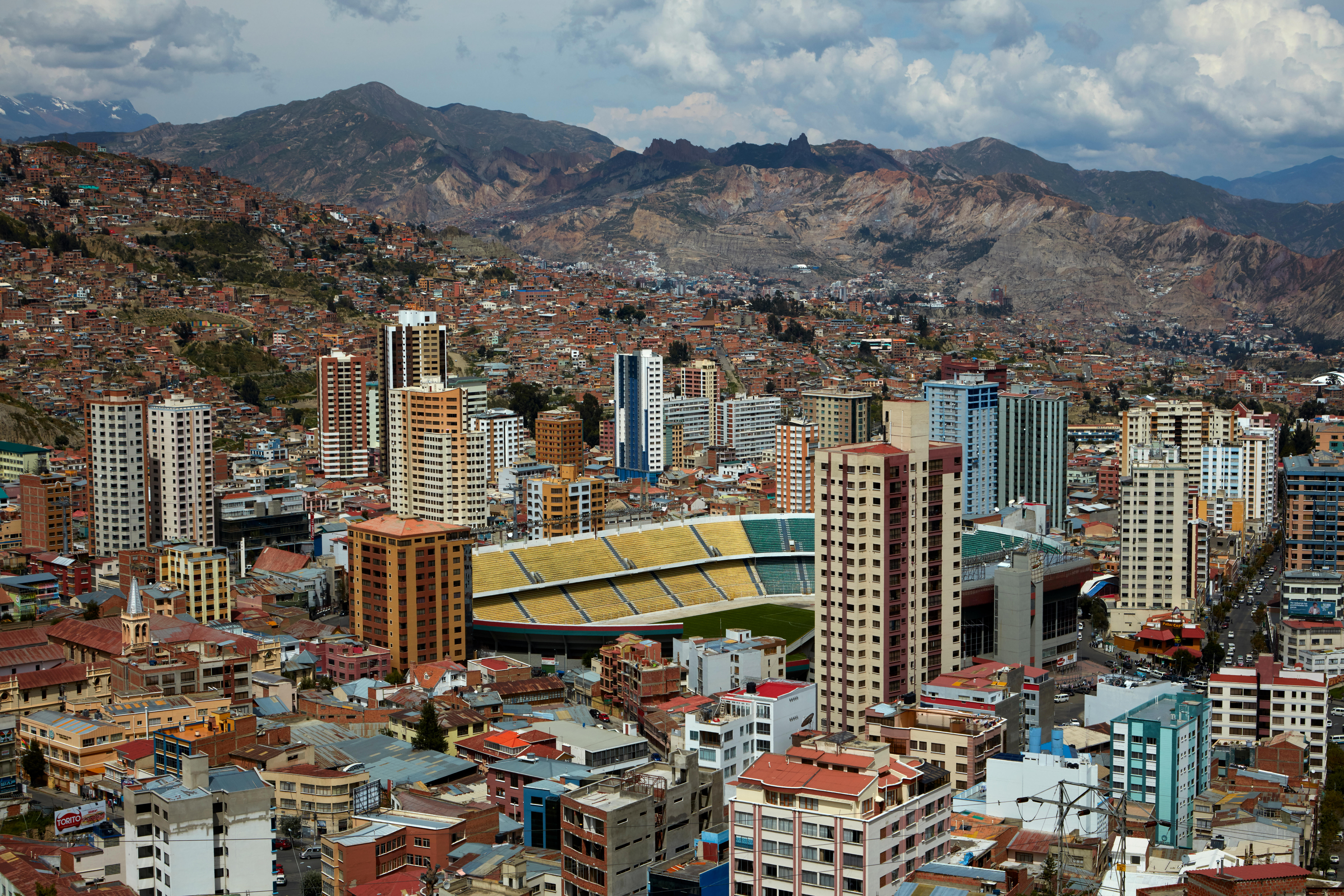
12. Estadio Hernando Siles (Bolivia)
Sitting the best part of 12,000 feet above sea level, the Estadio Hernando Siles is one of the highest stadiums anywhere in the world (for comparison, Wembley is less than 200 feet above sea level).
Situated in the Bolivian capital of La Paz, its extreme altitude saw FIFA briefly ban it from hosting international matches – only to grant an exemption a month later. It’s fair to say opposition players aren’t too keen on going there: Neymar once said it was “inhumane” to play in such an environment.
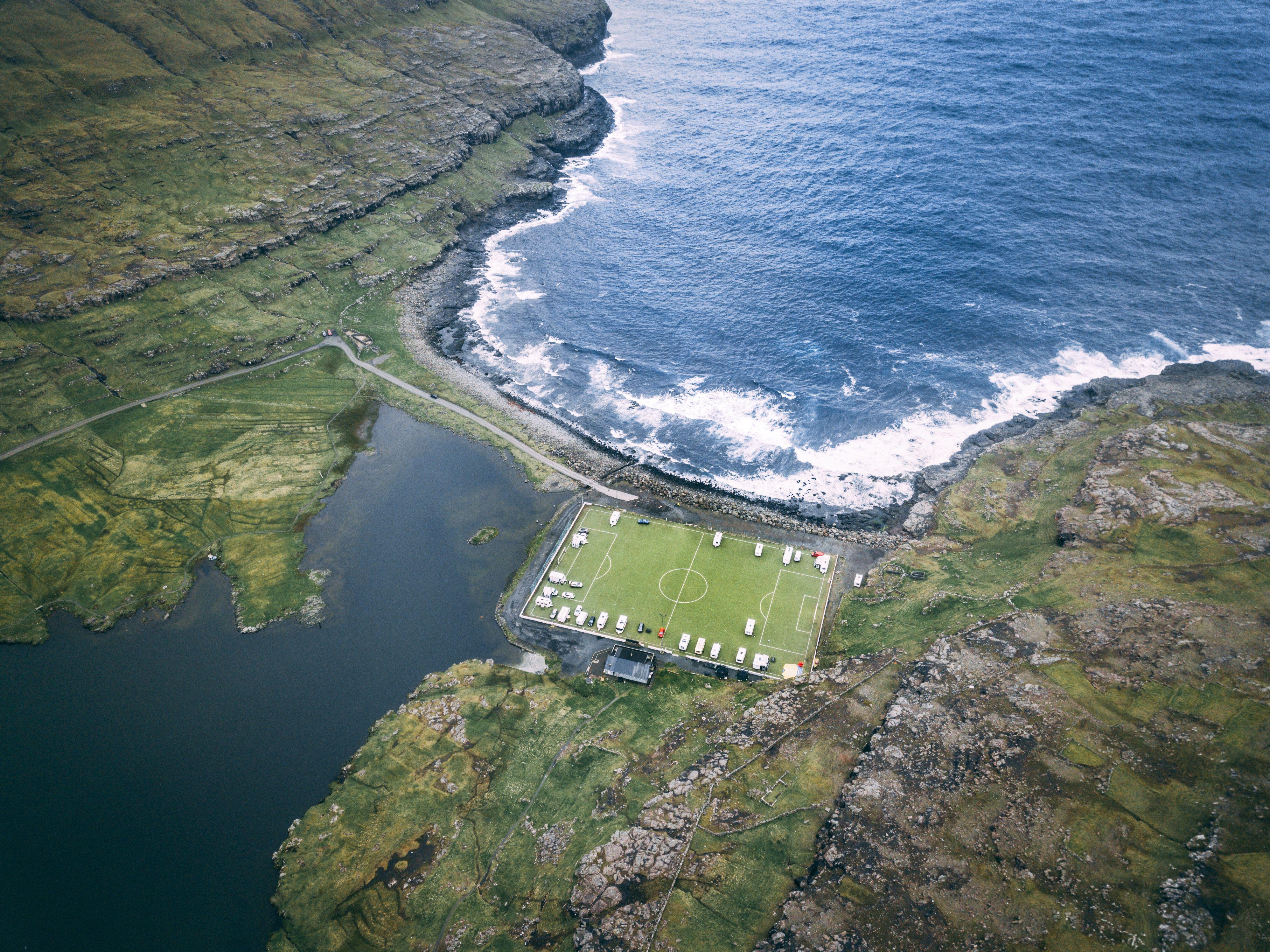
11. Eidi Stadium (Faroe Islands)
We’ve got to assume quite a lot of balls get irretrievably lost here. The Eidi Stadium in the Faroe Islands could hardly have been built any closer to the sea if they’d tried (to be fair, there’s not masses of land to work with on the North Atlantic archipelago).
It gets pretty chilly up there too (temperatures barely go above 12°C even in the summer) – but can spectators really have too many complaints with those views on offer?
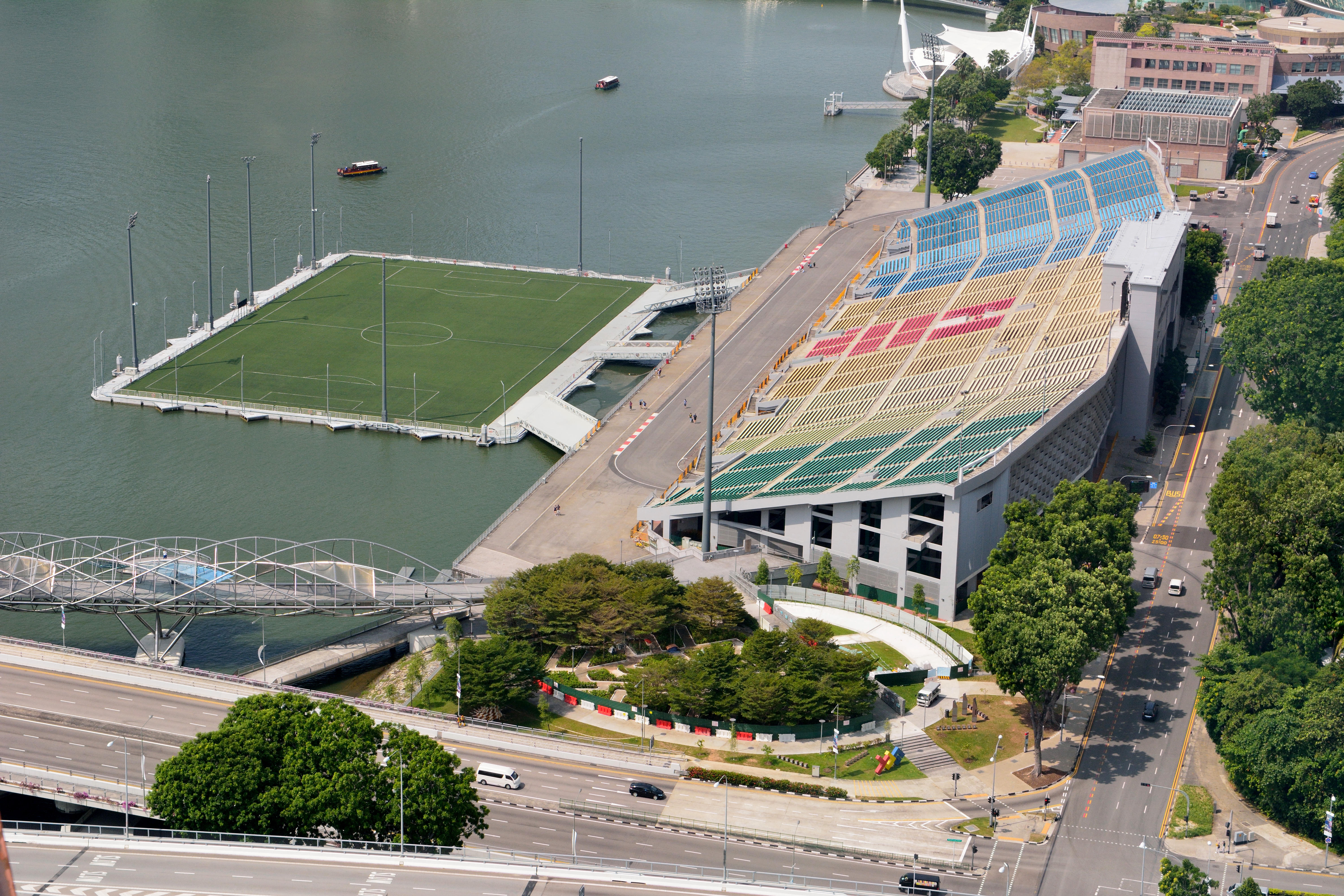
10. The Float (Singapore)
Constructed in Singapore’s famous Marina Bay, the Float was exactly what it says on the tin: a floating football pitch.
With room for 27,000 fans in one big stand on the shore beside it, the Float – which could take the weight of 9,000 people (what a location for a pitch invasion) was opened in 2007 and staged its first footy match in 2009.
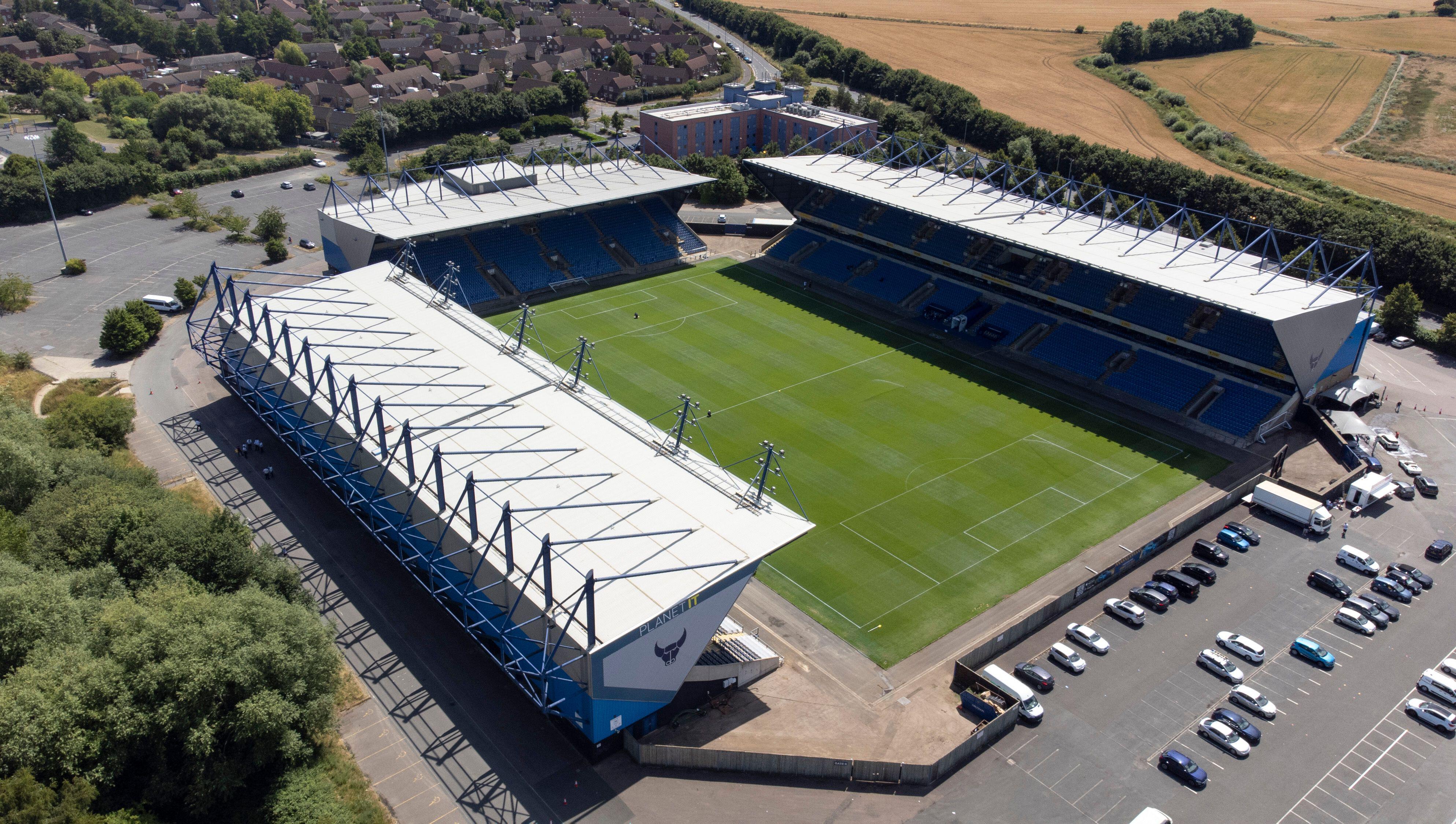
9. Kassam Stadium (England)
There’s no denying that Oxford United’s Kassam Stadium looks pretty ridiculous. It’s only got three stands, for goodness sake – so it should be the Kassam Three Quarters of a Stadium, surely?
Behind one goal, there’s a fence and a car park (and a bowling alley, which might tempt you if the game is a particularly dull affair) – and when fans were barred from the stands amid Covid restrictions in 2020, a group of Portsmouth supporters took full advantage of the Kassam’s, er, distinctive layout by watching from a stack of pallets on the back of a flatbed truck.
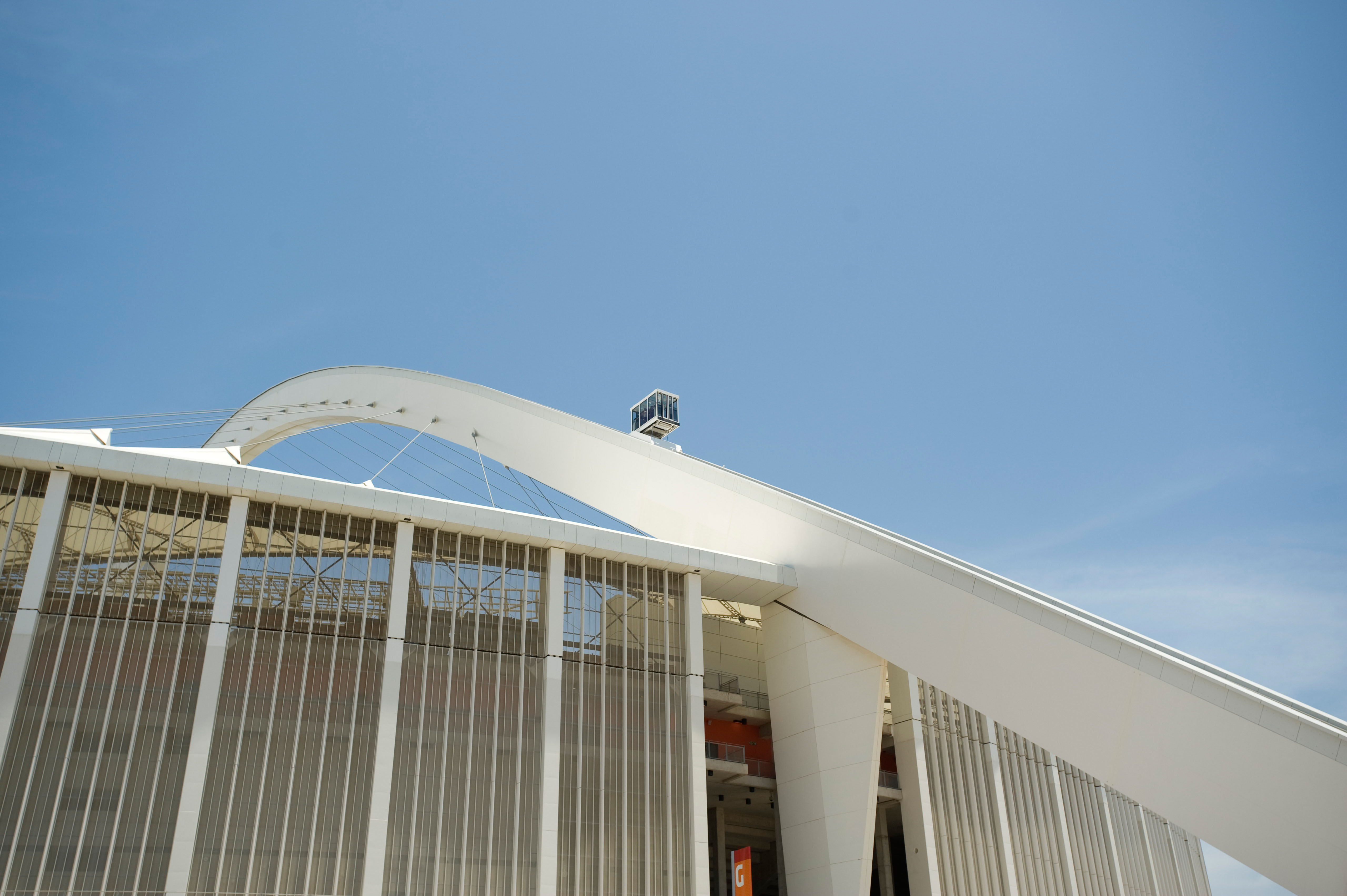
8. Moses Mabhida Stadium (South Africa)
One of the most impressive venues for the 2010 World Cup in South Africa, Durban’s Moses Mabhida Stadium includes a feature you don’t see at too many grounds: a funicular railway – attached to it.
Running along the arch which spans the stadium, the SkyCar affords passengers spectacular views of the city on the Indian Ocean.
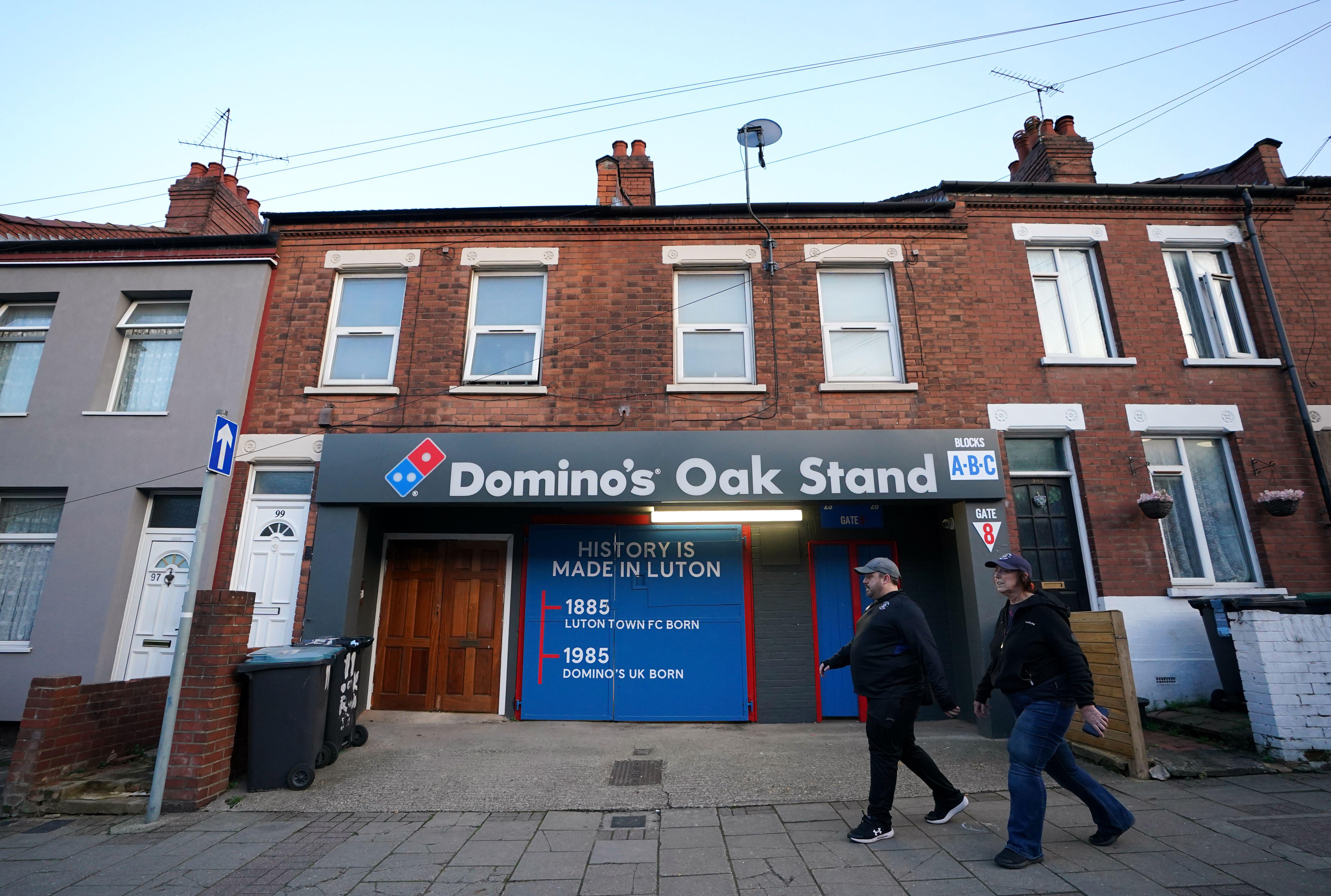
7. Kenilworth Road (England)
The entrance to Luton’s Oak Stand, the away end at Kenilworth Road, is pure meme material – but anyone who says they’ll miss it when the Hatters move to a swanky new adjoining is lying, let’s be honest.
After walking through the turnstiles embedded in the terraced houses adjoining the ground, you head up some stairs from where you can read the tags on people’s washing drying in their back gardens, and into one of the oldest stands in English football. It’s quite an experience.
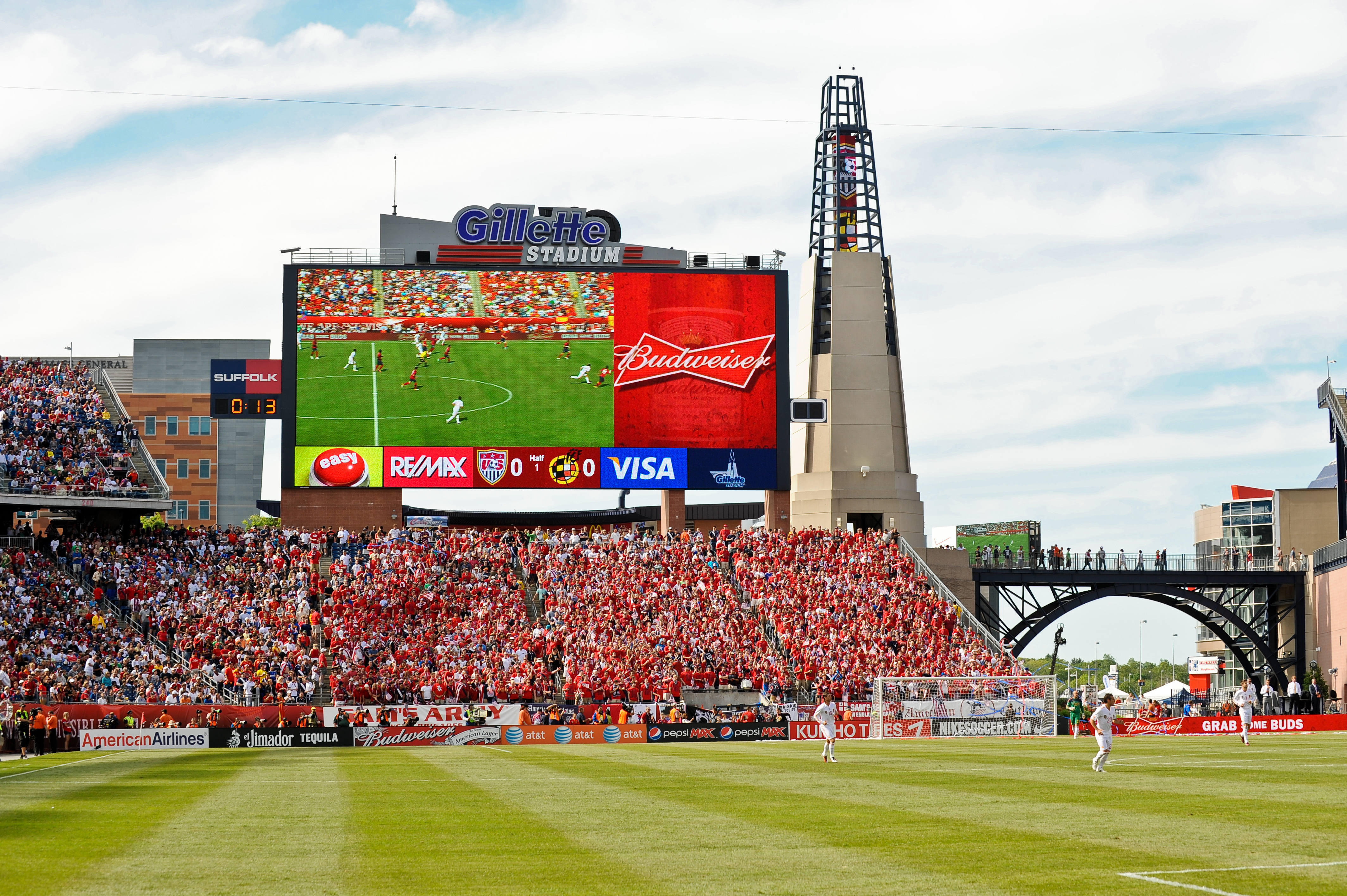
6. Gillette Stadium (USA)
America is renowned for its excess, and two features of the Gillette Stadium in Foxborough, Massachusetts exemplify that to a tee.
Behind one goal at the home of MLS outfit the New England Revolution (and serial Super Bowl winners the New England Patriots), there’s not only a bridge but a lighthouse too. Why? Because America.
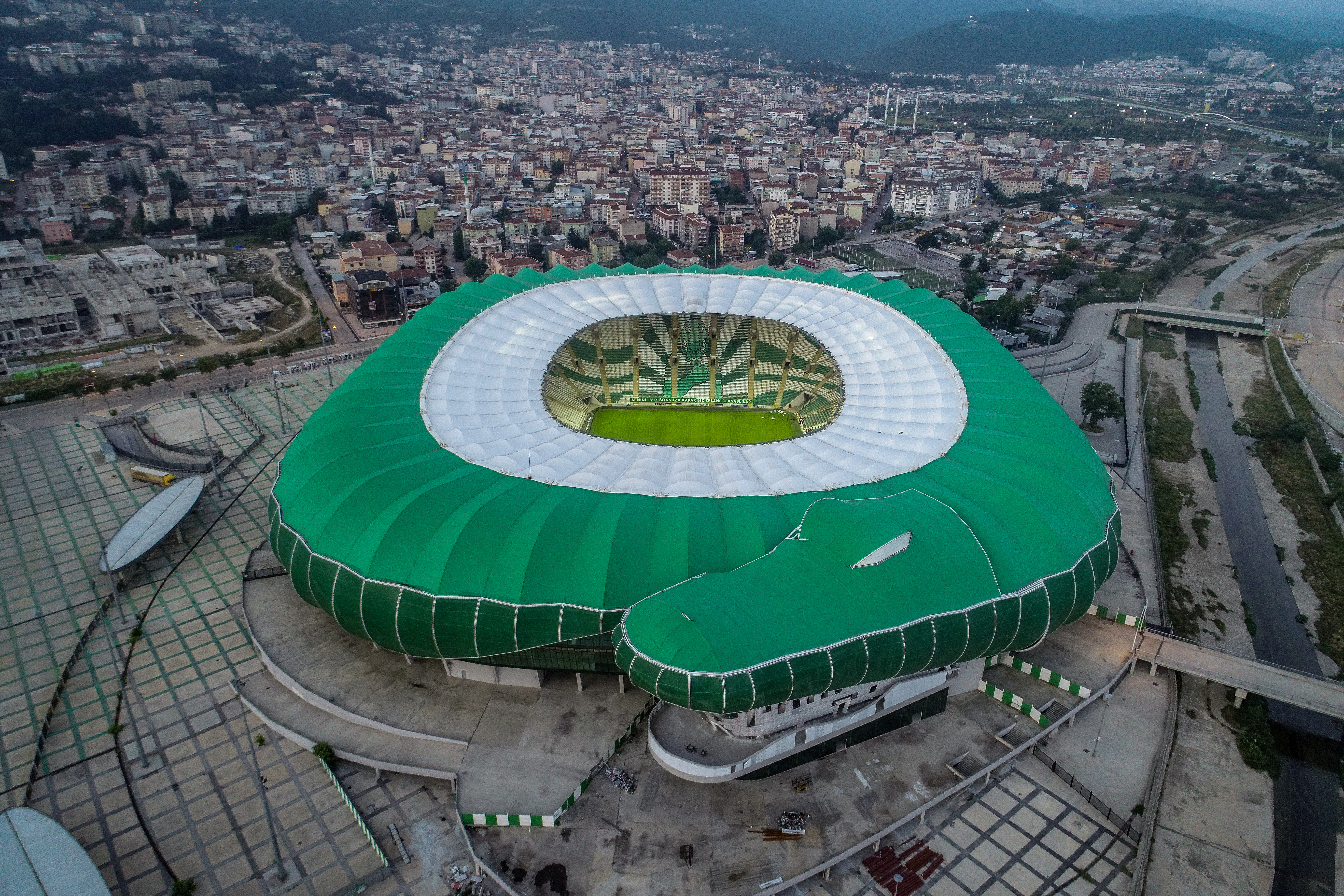
5. Centennial Ataturk Stadium (Turkey)
They’re nicknamed the Green Crocodiles (aren’t all crocodiles green?), and 2009/10 Turkish champions Bursaspor clearly wanted the whole world to know when they built their new ground.
Shaped like one of the swamp-dwelling reptilian beasts (and not in an abstract way – it looks like the realisation of a child’s drawing), the Centennial Ataturk Stadium has to be one of the most downright fun anywhere in the world.
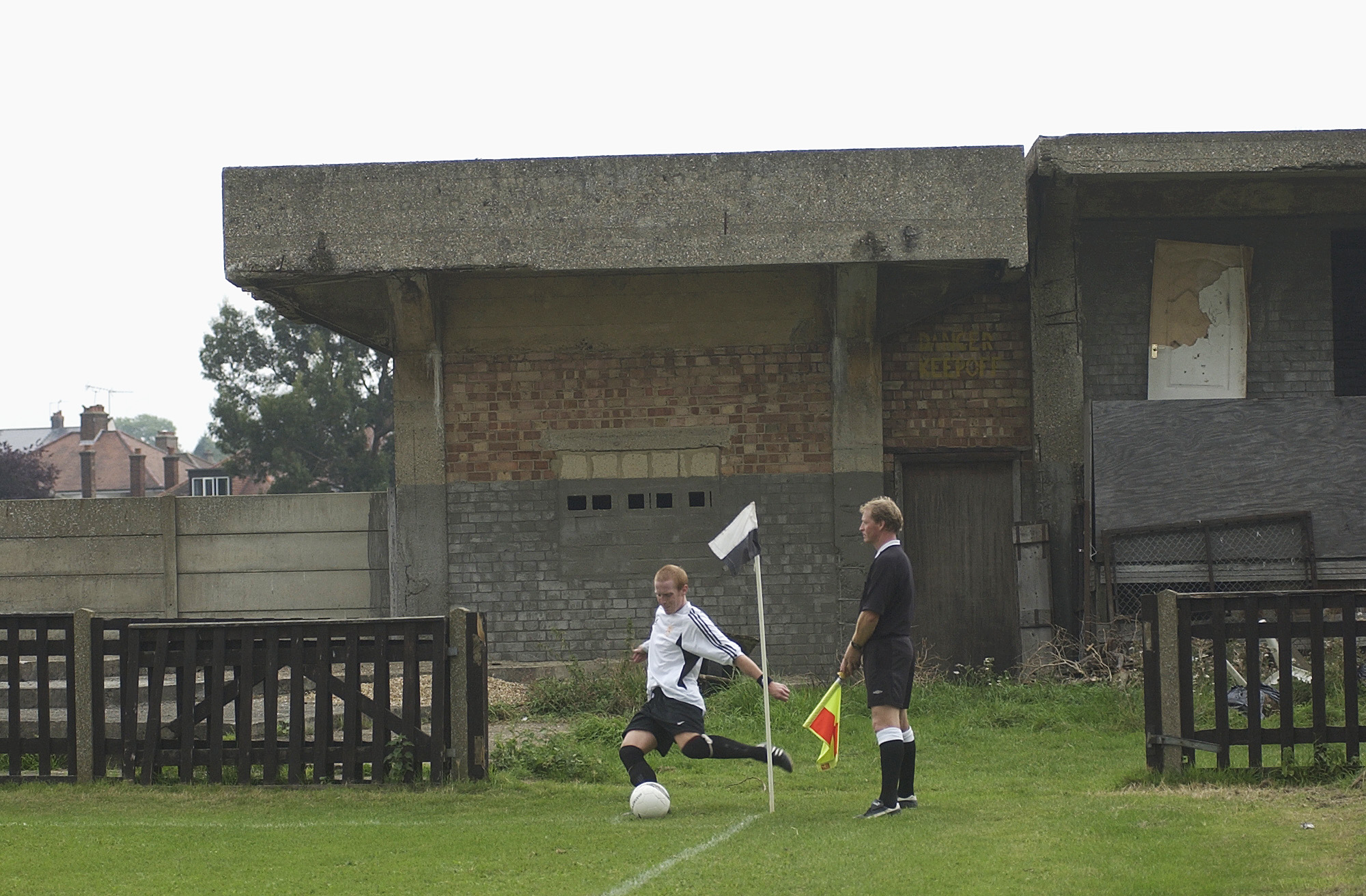
4. Grosvenor Vale (England)
Formerly home to Ruislip Manor, Wealdstone’s Grosvenor Vale is pretty indistinguishable from any other small non-League ground in England – until you look a bit closer at one corner.
You see that beefy concrete structure? It doesn’t house turnstiles; it’s an anti-aircraft gun turret left over from the Second World War. Best hope it’s not still operational with the Wealdstone Raider around.
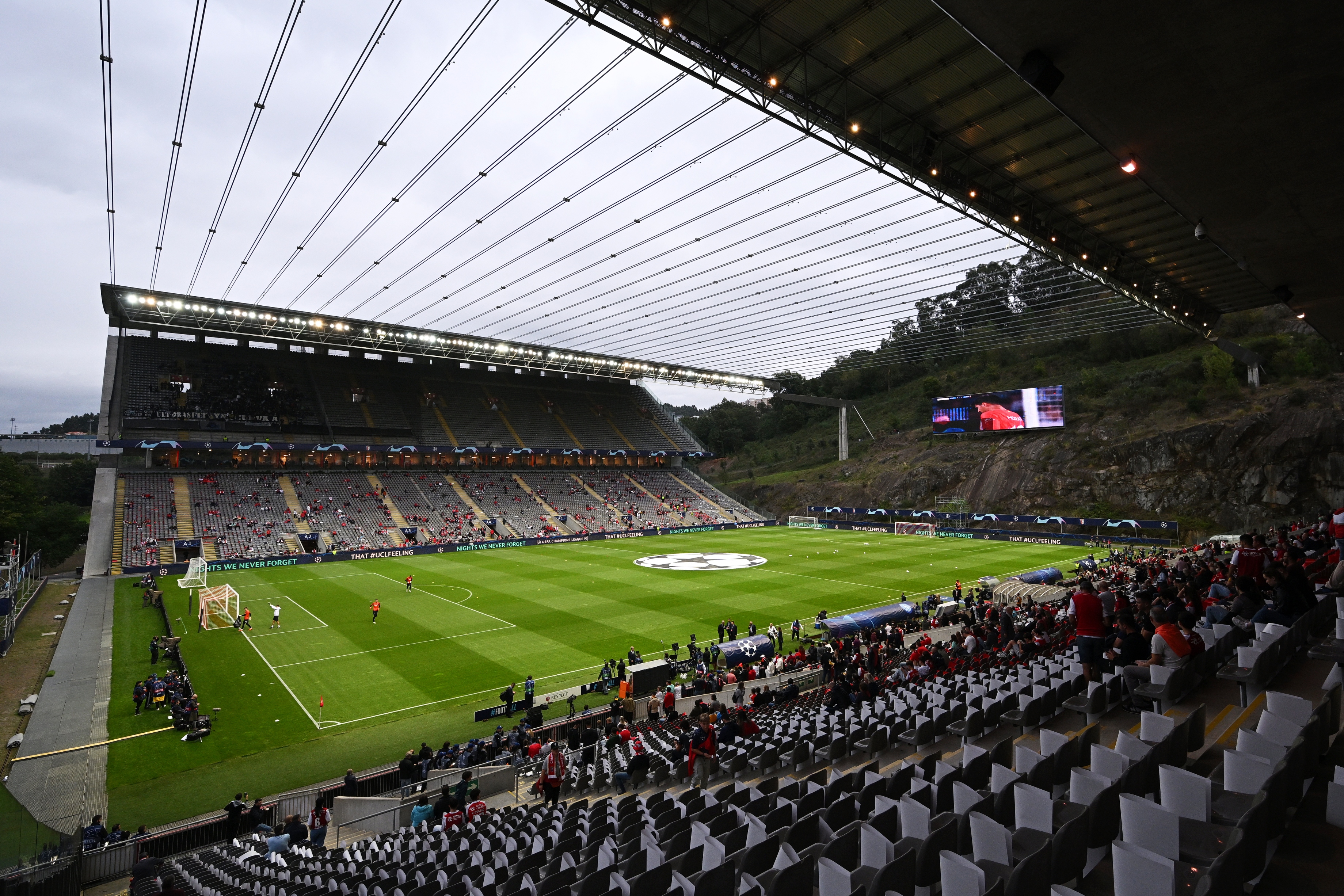
3. Estadio Municipal de Braga (Portugal)
A quite incredible feat of engineering, the Estadio Municipal de Braga, which staged two games at Euro 2004, was carved out of a quarry – hence the sheer rock face at one end.
The hillside dramatically drops away at the other end, leaving room for only two stands – which are connected by a vast plaza underneath the pitch.
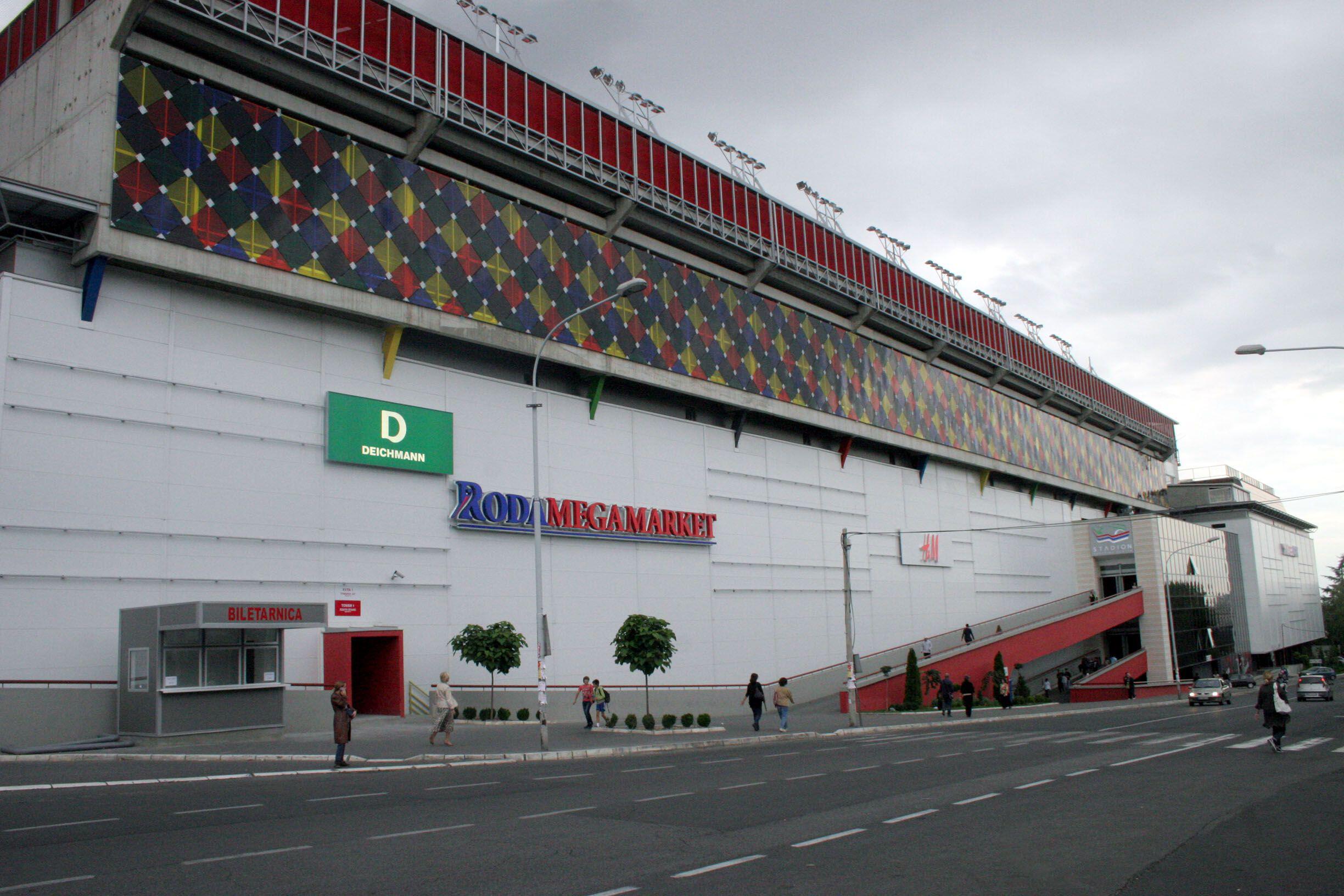
2. Vozdovac Stadium (Serbia)
Stadiums near retail parks have become a fairly common sight in England in recent years – but FK Vozdovac’s Vozdovac Stadium takes things to a whole new level: it sits on top of a shopping centre.
So, if the game isn’t providing you with sufficient entertainment, you can pop down below and treat yourself to a new pair of shoes or whatever takes your fancy. Quite handy, really.
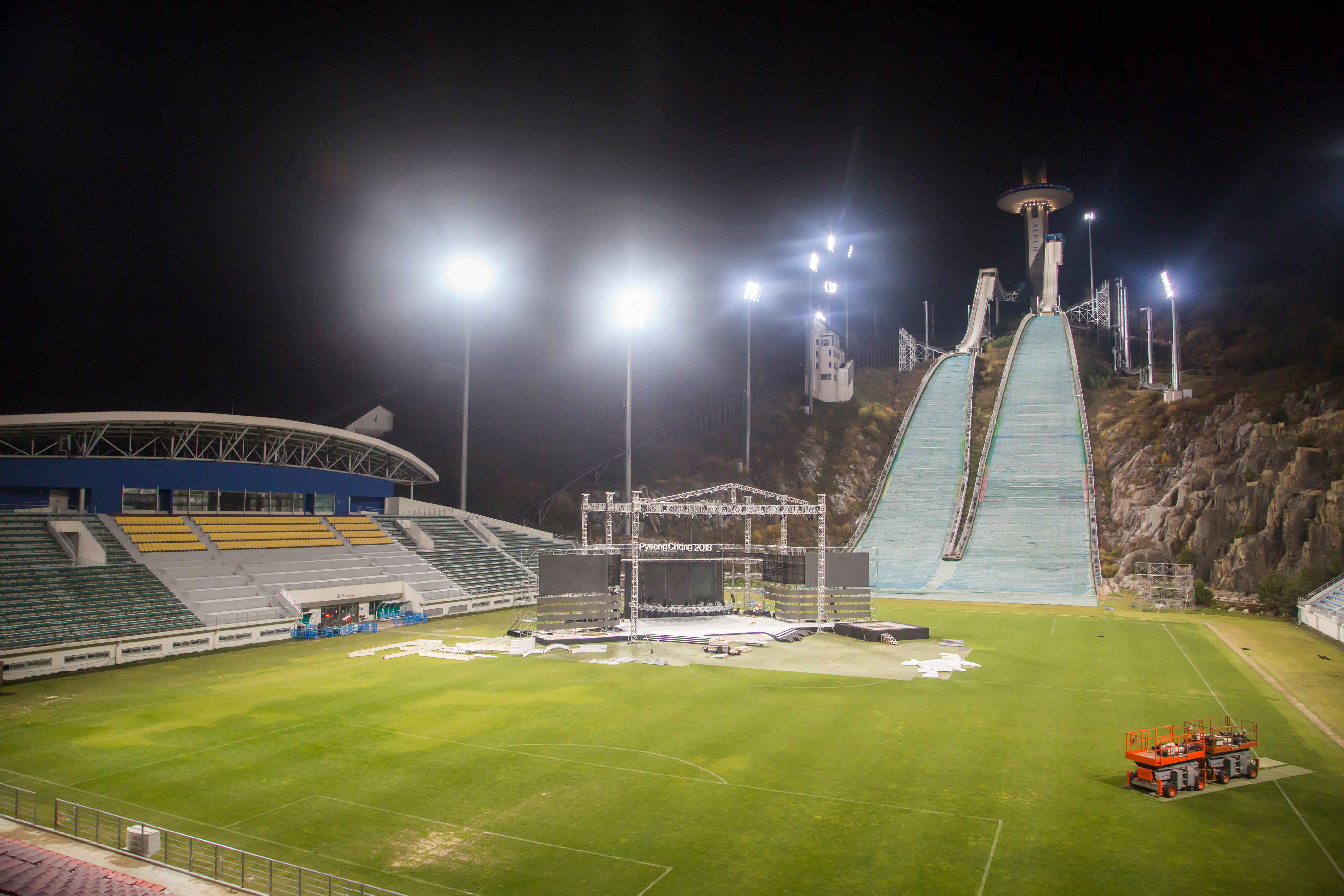
1. Alpensia Ski Jumping Centre (South Korea)
We’ve seen football and rugby clubs share grounds – even football and cricket – but we never would have guessed that football and ski jumping could take place at the same venue.
Ok, they weren’t going on at the same time – that would be ridiculous (although fun, to be honest) – but South Korean outfit Gangwon FC were temporarily based at the Alpensia Ski Jumping Centre, built for the 2018 Winter Olympics. We promise you the picture is not AI-generated. Bizarre, isn’t it?!

Tom Hancock started freelancing for FourFourTwo in April 2019 and has also written for the Premier League and Opta Analyst, among others. He supports Wycombe Wanderers and has a soft spot for Wealdstone. A self-confessed statto, he has been known to watch football with a spreadsheet (or several) open...
